Last Updated on October 21, 2023 by
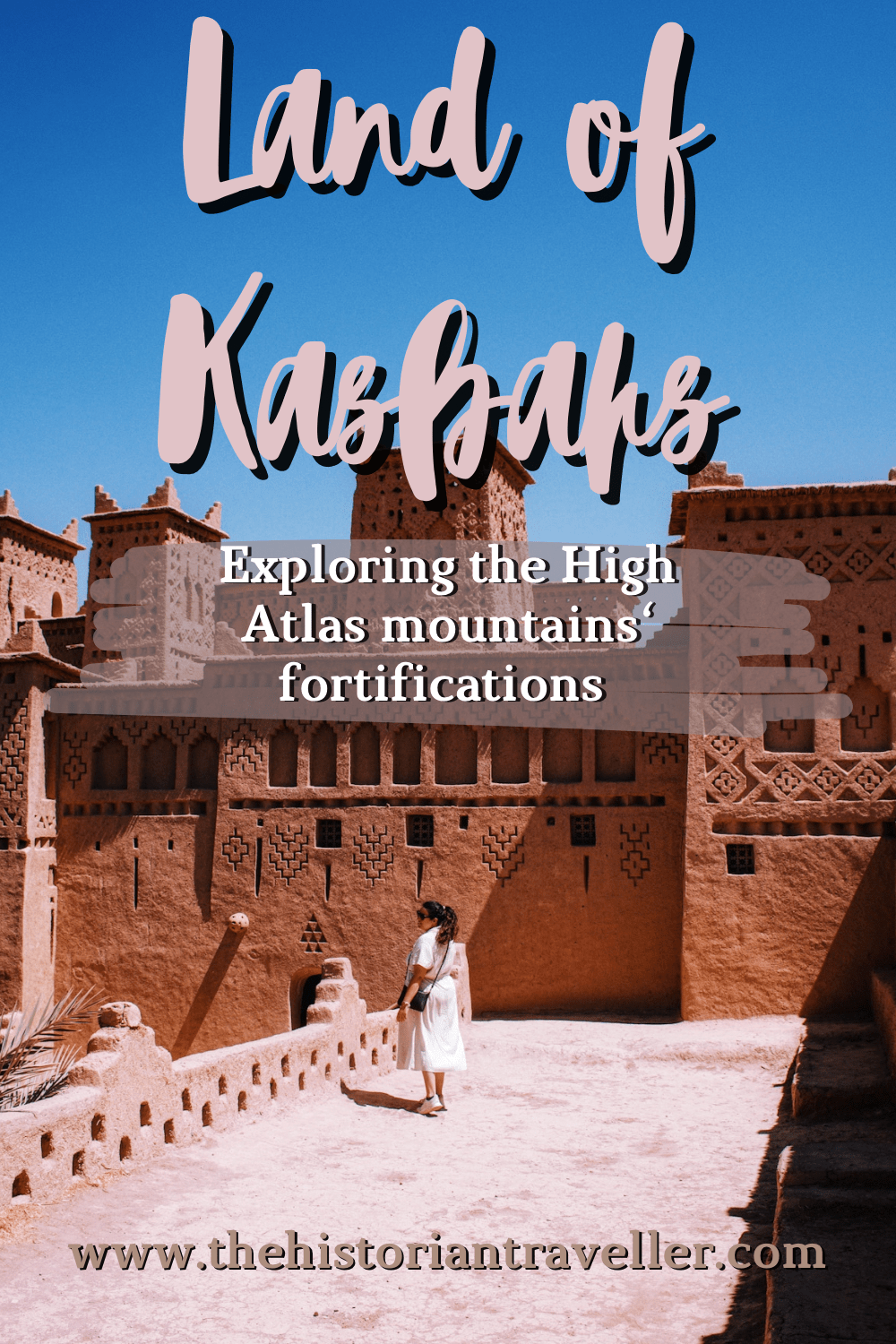
Imazighen, aka the High Atlas Mountains, are North Africa’s highest mountain range. Homeland of the Berbers, they are affectionately called by them as Idraren Draren, the ‘mountains of mountains’, and it needs just a second to understand why. Crossing Morocco for more than 1000 km the Atlas Mountains act as a powerful barrier in between Morocco’s coastal areas and the immense stretch of the Sahara Desert. A place of intense beauty made of tortuous passes, fertile valleys and sky-high peaks. Exploring the High Atlas Mountains means take the road less traveled to immerse into the indigenous Berber culture. Because the path less traveled is always my favourite direction, this blog will take you through an amazing Morocco’s Road of a Thousand Kasbahs itinerary for your next trip of a lifetime.
Table of Contents
Kasbahs and Ksars. The historical fortifications of Morocco
While in Europe we have Castles, in Morocco there are Kasbahs (and all the word variations of it). Indeed, Kasbah, qasaba or alcazaba (in Spanish) means all the same thing: fortification. However, the term is historically flexible. This means it could indicate various types of fortified architectural examples. In the case of Morocco, there are three different types of kasbah: the fortified citadel, the fortified residence or a walled royal quarter. Some of them may include also a fortified village that is called Ksar.
Fortified kasbah-citadels of Morocco
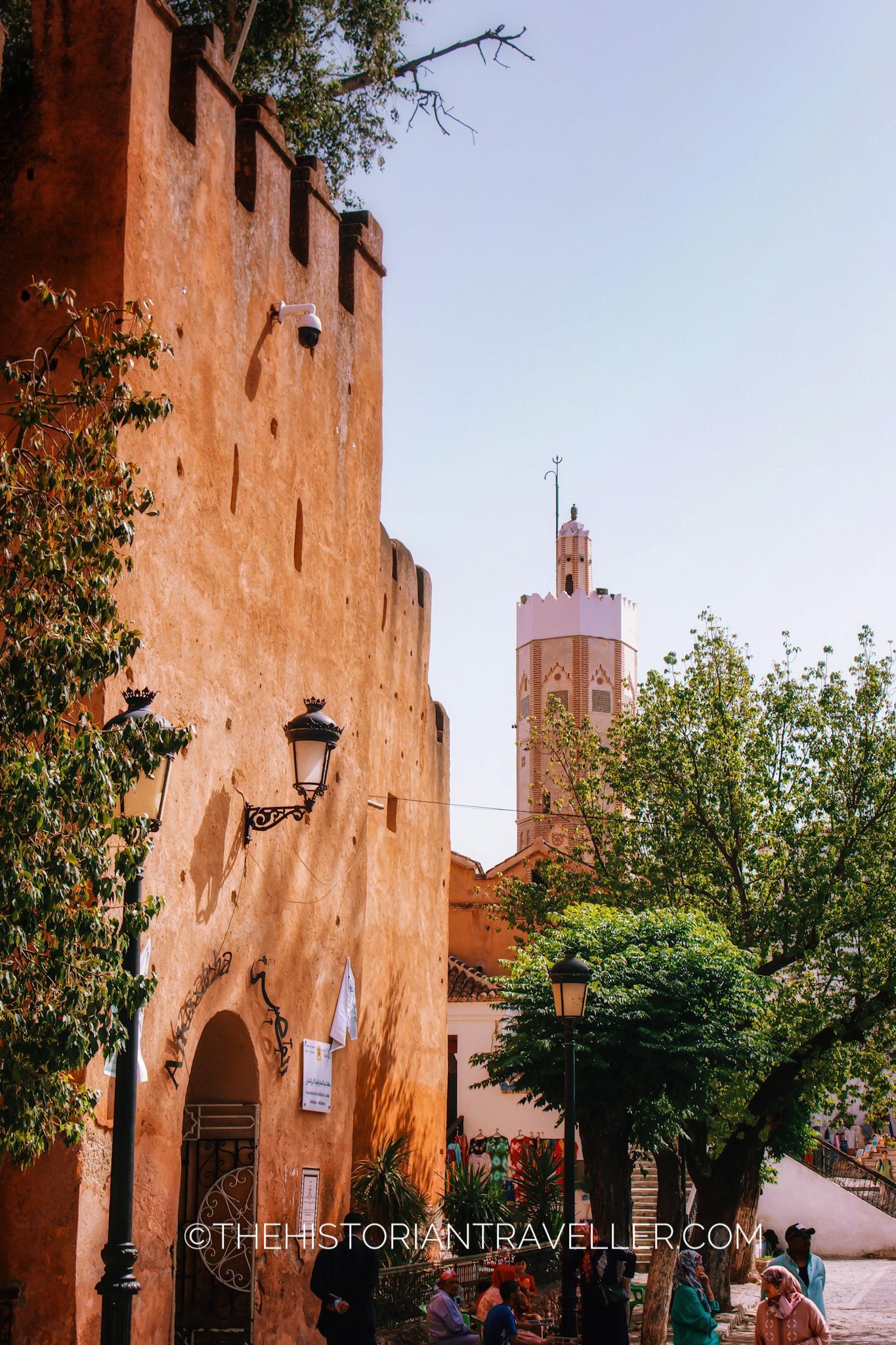
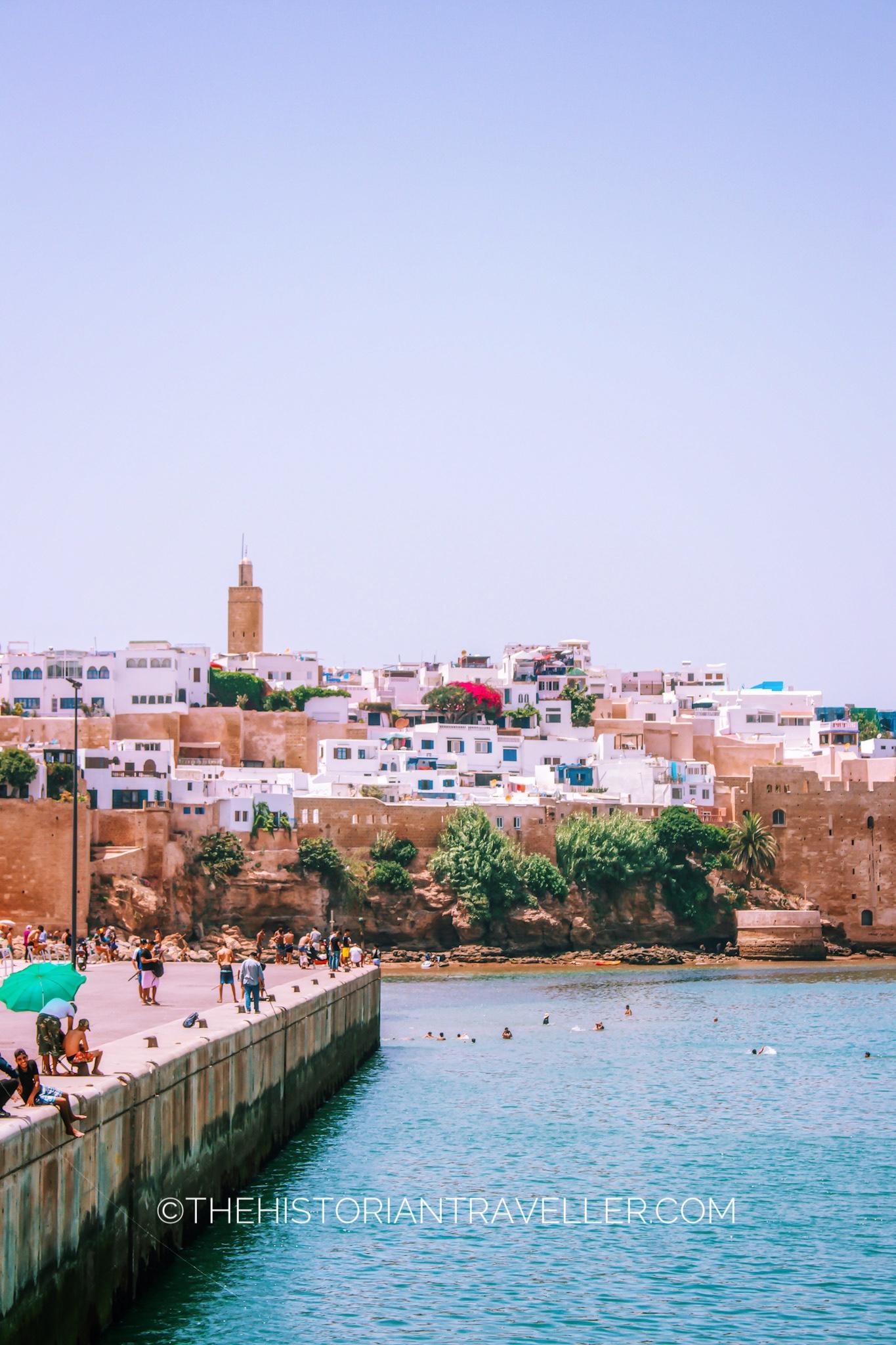
There are not many examples of fortified kasbah-citadels in Morocco. These are usually built on elevated positions and may include palatial architectural elements and private spaces such as a mosque, hammam or even private residences in addition to the military spaces.
A notable example is the Kasbah of the Oudayas in the capital, Rabat. This dates between 1150 or 1151 and it was purposely built with the intent of being a fortified citadel. Despite the original project was largely abandoned a few years later. A further example is the Kasbah of Agadir Oufella. This was built at the top of a mountain by Sultan Mohamed Ech-Cheikh Al-Saadi. Unfortunately, following a big earthquake in 1960, only the main gate and walls of this Kasbah survived. Although an important renovation project aims to rebuilt the Kasbah to its splendour and now it’s partially visitable.
A last example is the Kasbah of Chefchaouen. Although now is less visible compared to the past, this fortification is the oldest part of the city and used to be on an elevated position compared to the village. However, now it appears surrounded by the city’s dwellings in a quite central position. Therefore, the sense of defensive fortification has a little been lost. Indeed, the Kasbah now hosts a curated Andalusian-style garden and the Center for Research and Andalusian Studies.
Fortified kasbah-residences of Morocco
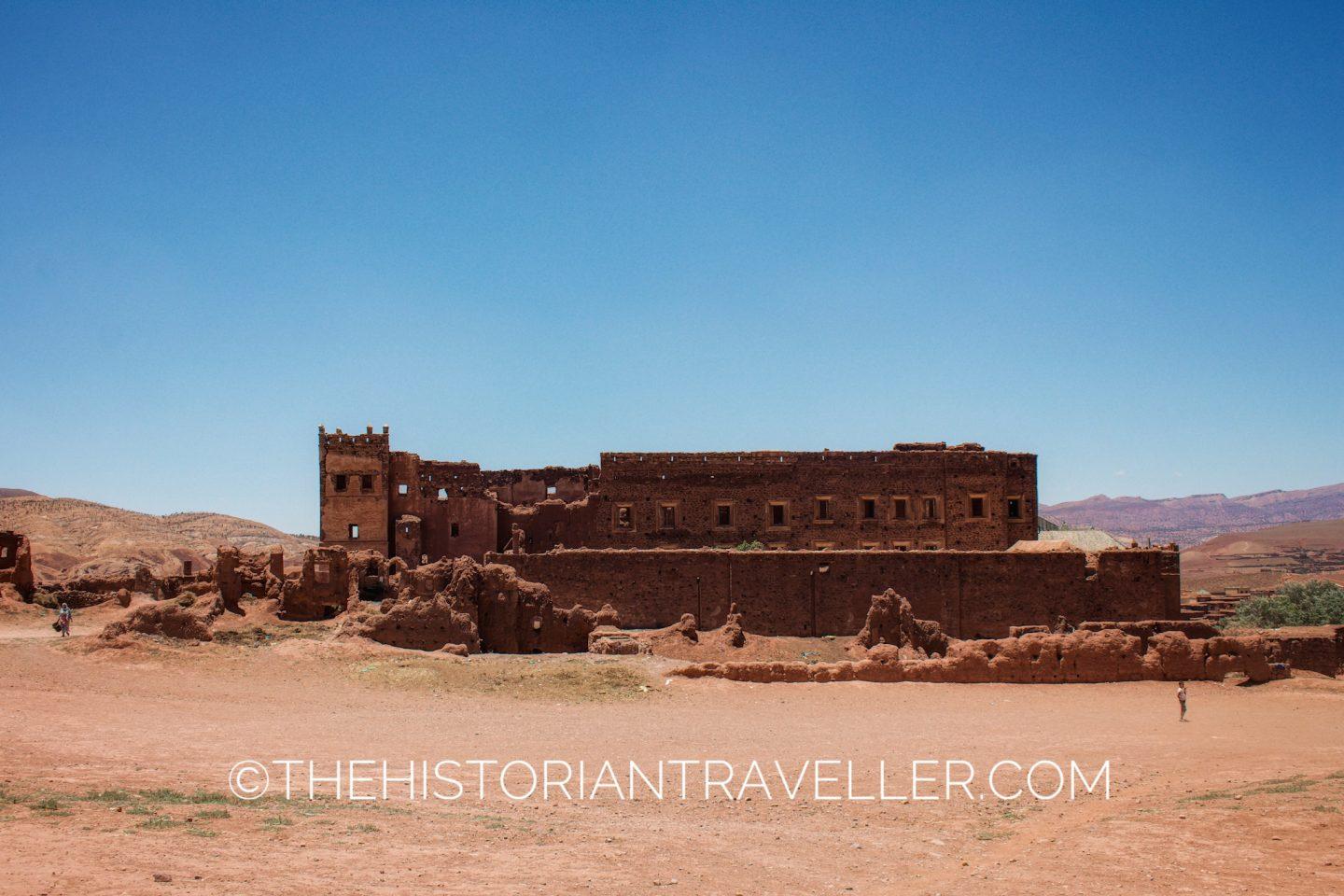
The fortified kasbah-residences are the predominant architectural type in Morocco. A few of these include also their fortified villages (i.e. the Ksar of Ait Benhaddou). These fortifications are geographically located in the Berber regions around the Atlas Mountains. Particularly in the area of the Draa Valley. There are so many fortifications that the road crossing this part of Morocco is nicknamed as “the road of a thousand kasbahs”. As this is the main topic of this article, I’ll discuss it in more depth below. So, keep reading!
Fortified Royal-Quarters of Morocco
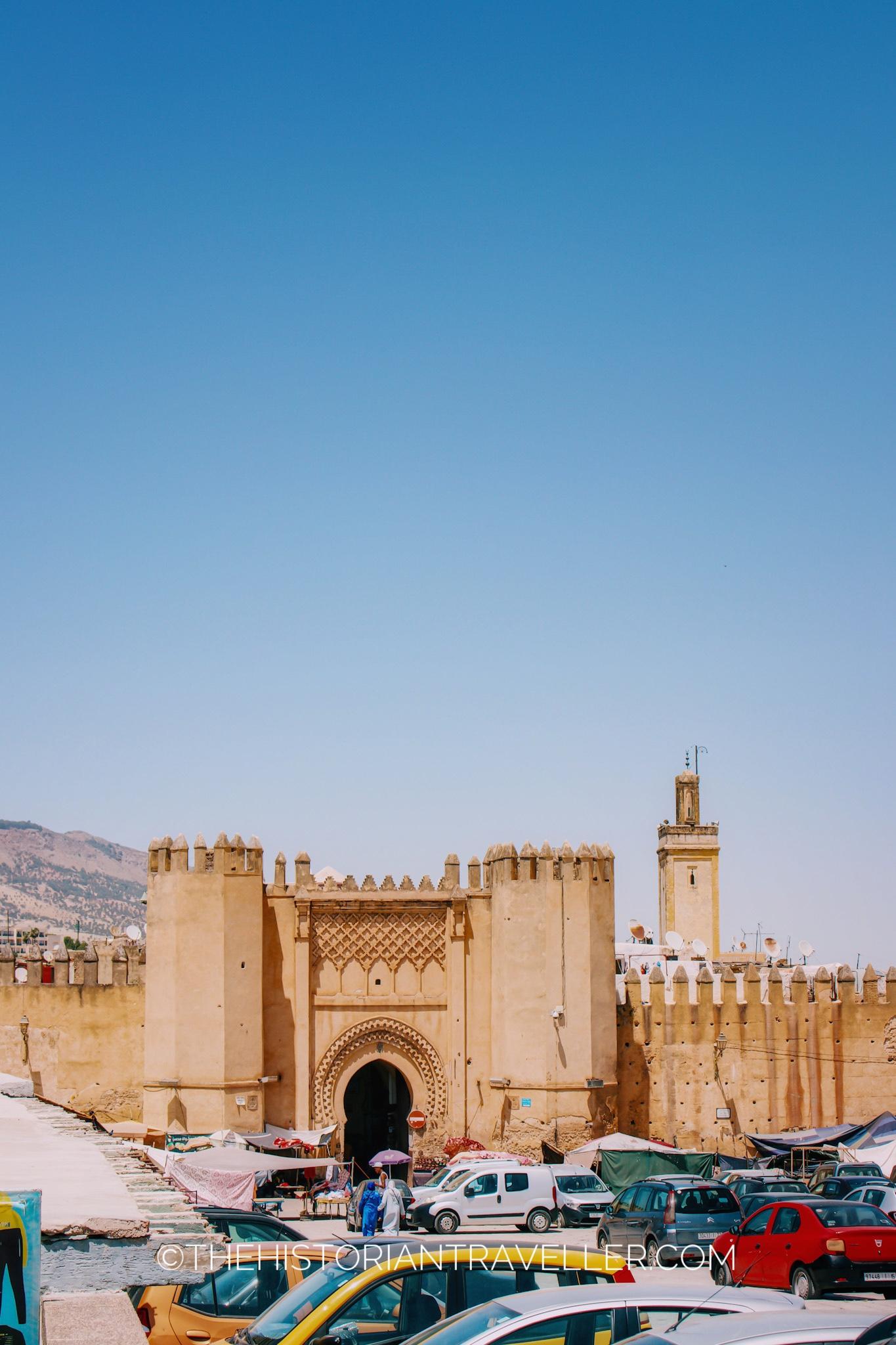
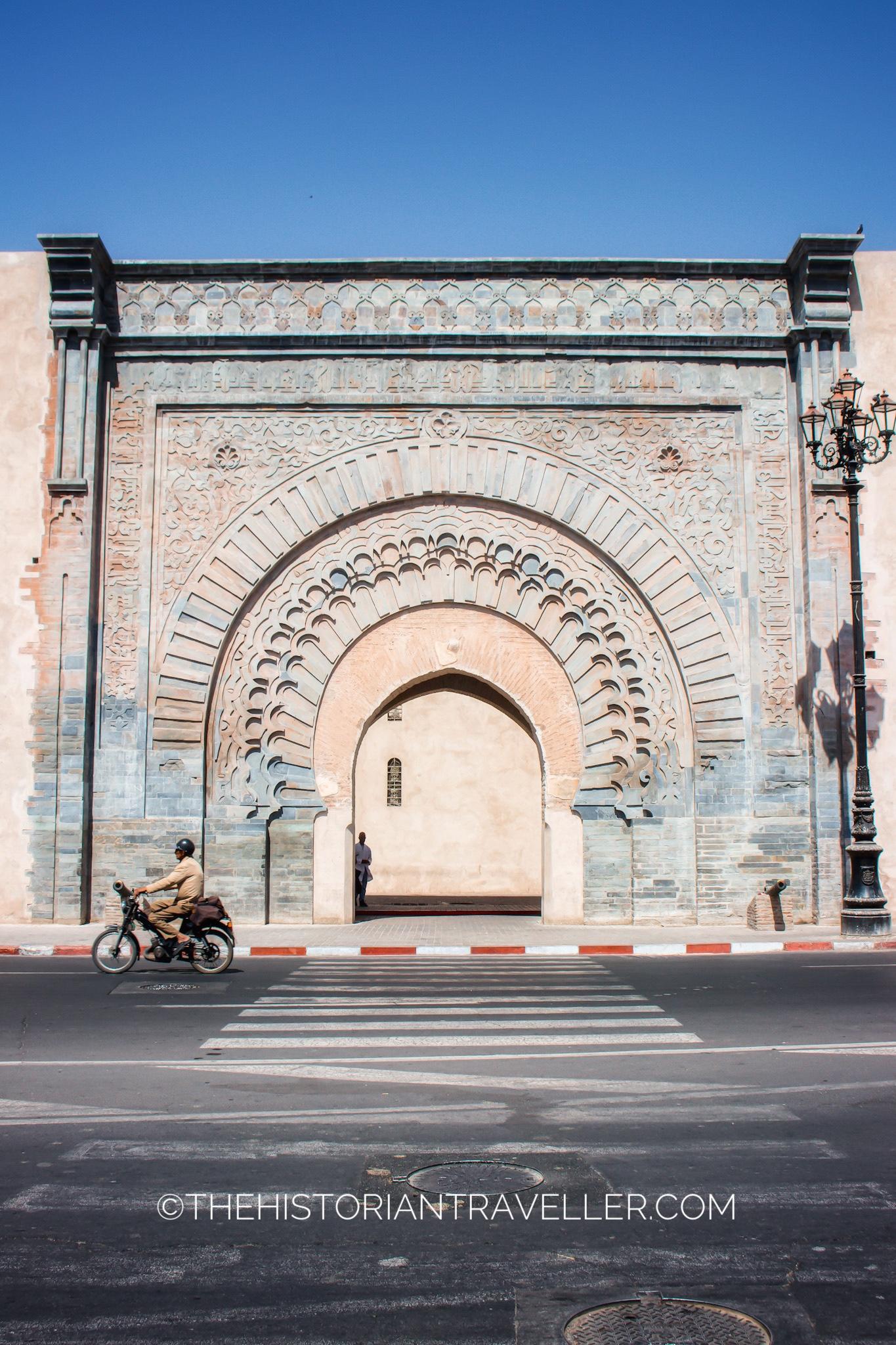
The term Kasbah in Morocco refers also to a walled part of the city that includes the palace of the ruler and/or the administrative/political centre of the state. Morocco has three fine example of this type of architecture.
Marrakech Kasbah
The Kasbah of Marrakech occupies a large part of the southern side of the Medina. This currently hosts Dar al-Makhzen, which is the residence of the King of Morocco (that he uses when visit the city). The original Almohad Kasbah dates back to the 11th century and still preserves various architectural elements of this period. This includes its main entrance Bab Agnaou, the Kasbah Mosque and several surviving walls. During the Saadian Period (16th-17th centuries) the ruler dynasty renewed and enlarged the original Kasbah. They built new premises, including within the walled structure the Saadian Tombs and Badi Palace.
Kasbahs of Fes
The second example of walled district built in Morocco is in Fes. It is recorded that Fes used to have not one, but 13 kasbahs! Unfortunately, of these unique Moroccan fortifications only 2 survive today. One of them is Kasbah An-Nouar. This Kasbah was built in the 12th century by the fourth Almohad caliph, Muhammad al-Nasir as part of its attempt to fortify Fes. A second fortification called Kasbah Bou Jeloud. This used to occupy the part of the city where now lies the famous Blue Gate of Fes. The second surviving fortification is Kasbah Cherarda. This dates back to 17th and was used mainly as a military fort.
Tangier Kasbah
The last example is the Kasbah of Tangier. This was built on a much later date compared to the ones in Marrakech and Fes (around late 17th century). It used to host the political power in Tangier and still preserves the Kasbah mosque and the Kasbah Palace, which is currently repurposed as Kasbah Museum of Mediterranean Cultures.
The land of a Thousand Kasbahs
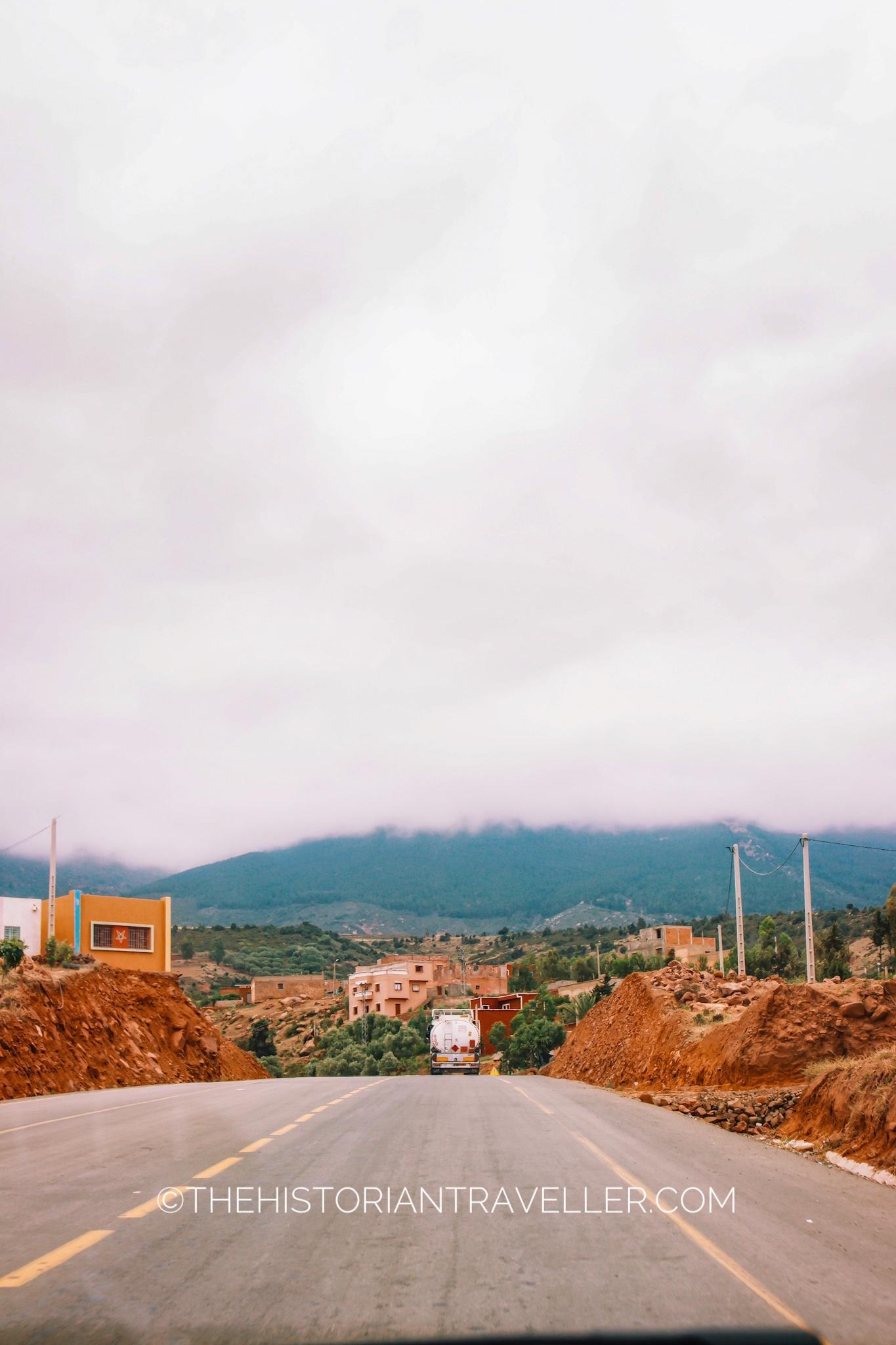
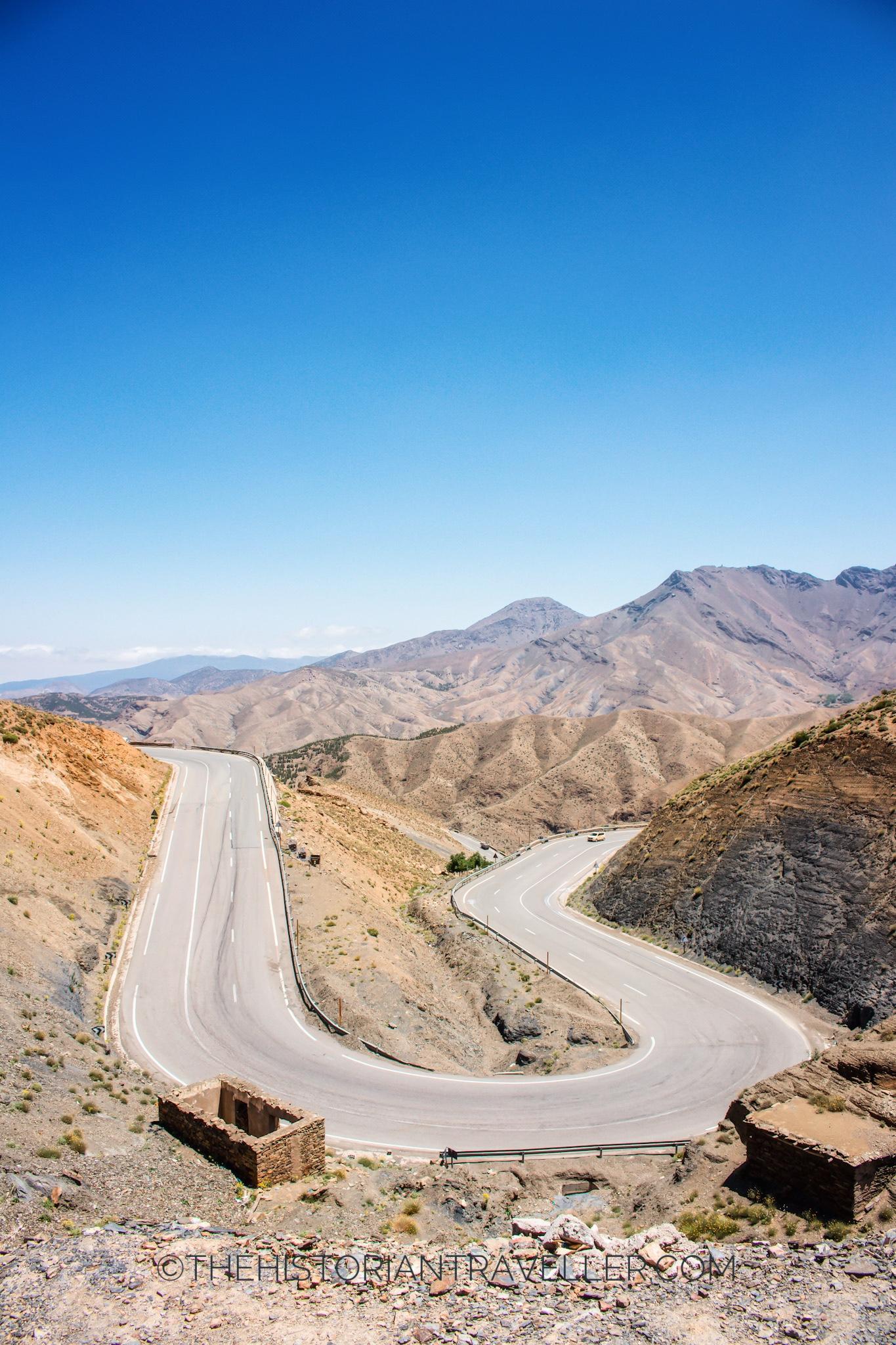
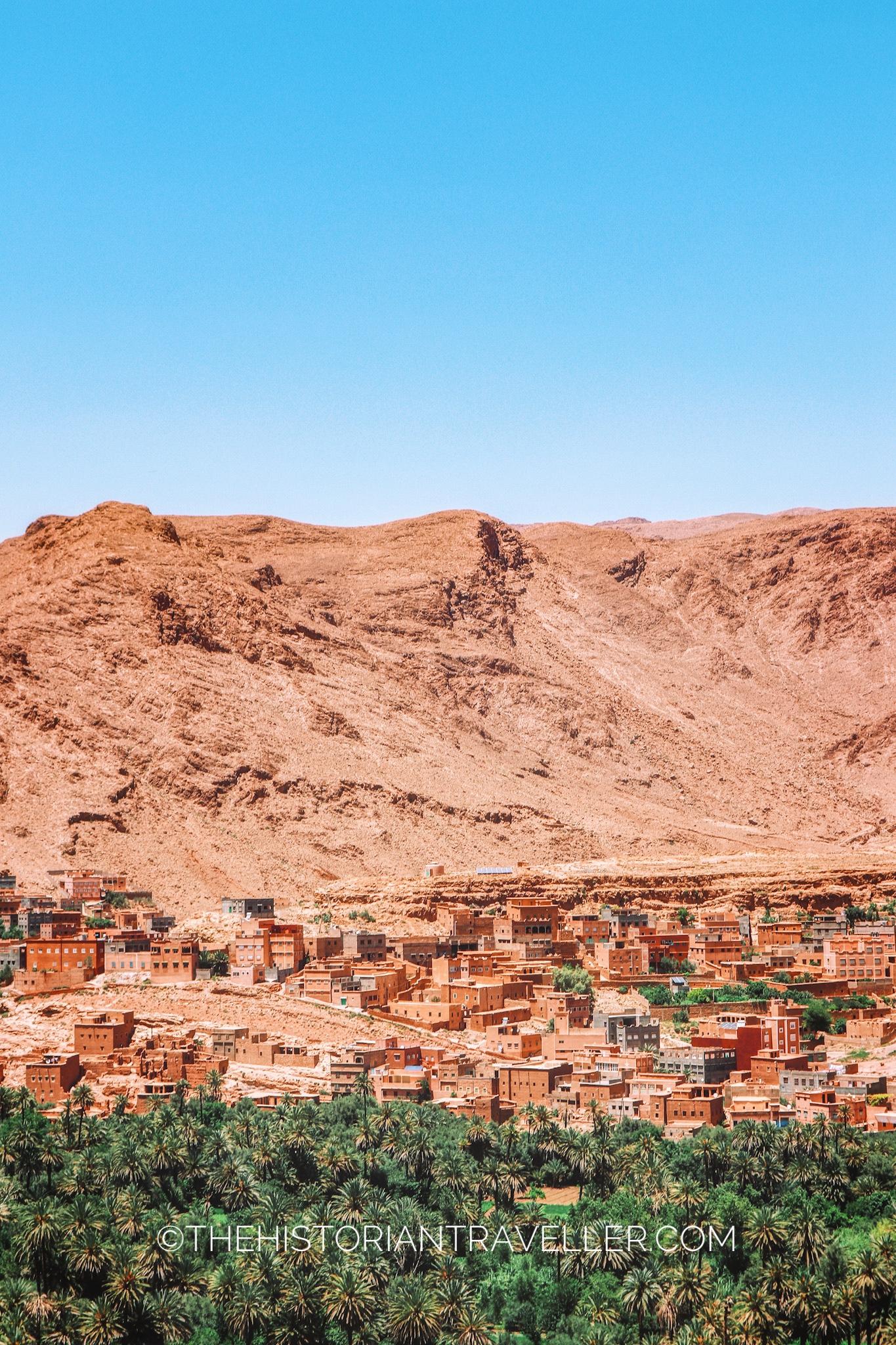
I am an adventurous traveler. Not one that travels just to check-off a landmark from her bucket list. I need more. I need the wind in my face, the adrenaline of a new adventure in unknown lands, I need the road less traveled and the risk of getting lost. So, when I heard that Morocco has more than 1000 Kasbahs sparse in the most remote areas of the High Atlas Mountains, I knew that was my next adventure. The Road of a Thousand Kasbahs was calling me. As a good historian, I couldn’t miss the opportunity to catch them all.
With a map on my phone and long days planning every single step of my Morocco 10 day itinerary, I soon realised my dream of visiting 1000 Kasbah was a little too ambitious. So, I opted for a more curated itinerary, which I hope will give you a good understanding of these amazing architectural jewels of the mountain.
The High Atlas Mountains on a Glance
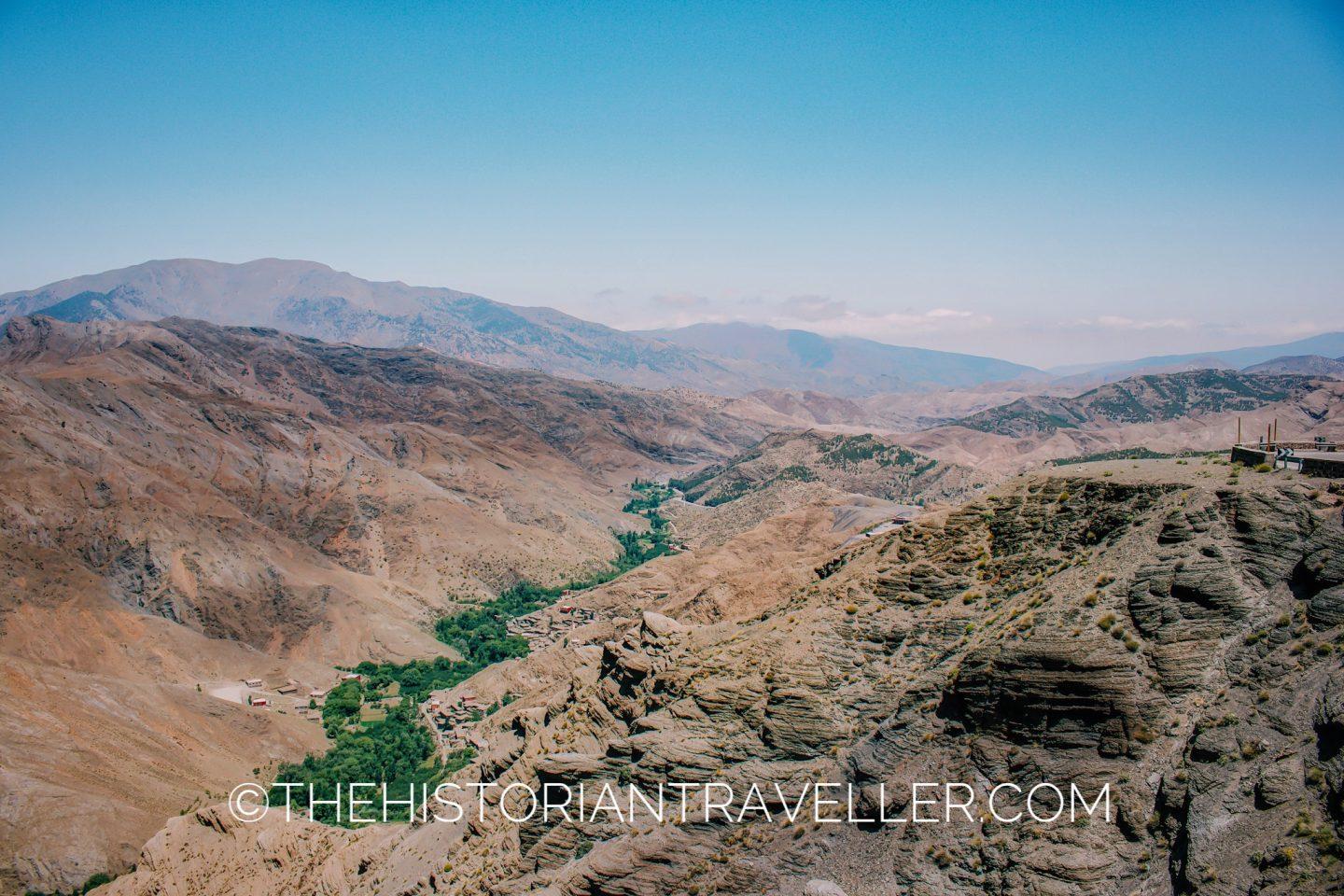
The High Atlas Mountains belongs to the Atlas Mountains, the highest mountain range in North Africa. This mountain range is so vast that literally separates the Sahara Desert from the Coastal areas of the Mediterranean Sea and the Atlantic Ocean (which takes its names exactly from this mountains!!!). It expands for more than 1000 km crossing Morocco, Algeria and Tunisia.
The section of crossing Morocco is divided into three parts: Anti-Atlas, High Atlas and Middle Atlas. The High Atlas section is the highest part of the mountain range. This is dominated by its highest peak, Jbel Toubkal, which rises at 4,167 mt above the sea level.
Berbers
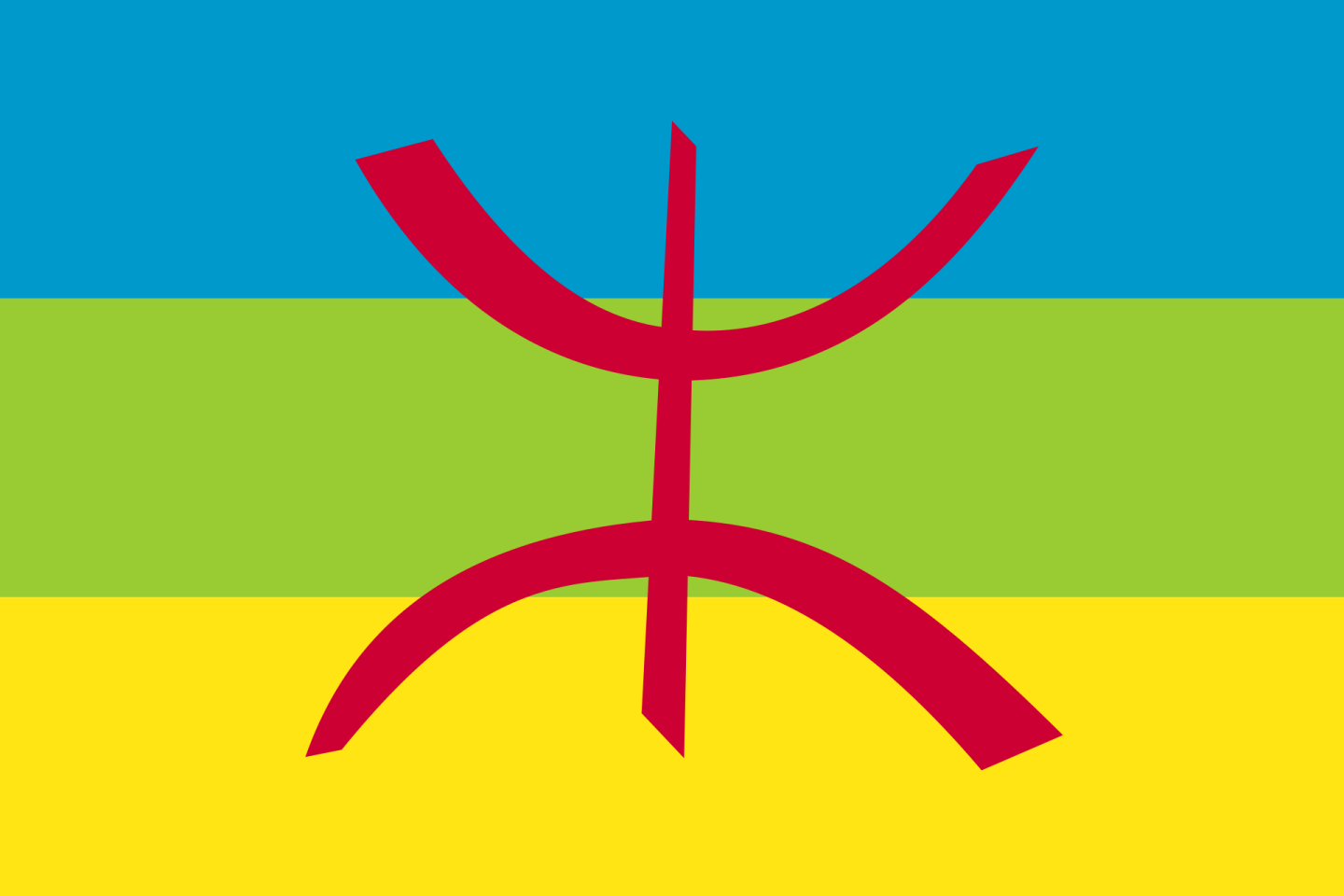
The High Atlas Mountains are inhabited by Berber tribes, which can be considered the “indigenous” population of the mountains. Indeed, it is historically recorded that Berbers, although called themselves with different names in the past, inhabited the Atlas Mountains at least since 5000 BC. The incredible fact is that they continuously kept their power on the mountains even when Morocco fell under different colonisers: Phoenicians, Greeks, Romans, Arabs, French.
The main language spoken in the Atlas Mountains (including the High Atlas) is the Amazigh/Tamazigh. The language of the Berbers. This language has ancient origins and it is estimated the first inscriptions dates back to 4th century BC. Nevertheless, because the language is mainly transmitted orally, linguists believe that Berber-speaking people have lived in North Africa since at least 3,000 BC.
Areas of Interest
Excluding the Kasbahs, of which we’ll discuss below, people visiting the High Atlas Mountains should definitely include the city of Ouarzazate. This is the biggest city of the area and place of interest for many famous Hollywood productions. Natural areas of interest in the High Atlas Mountains include the Toghda and Todra Gorges and the tortuous roads of the Dadès Gorges. To this, already famous list, I would personally include a stop in the luscious Ounila Valley and the Oasis of Skoura.
All you need to know to visit the High Atlas Mountains
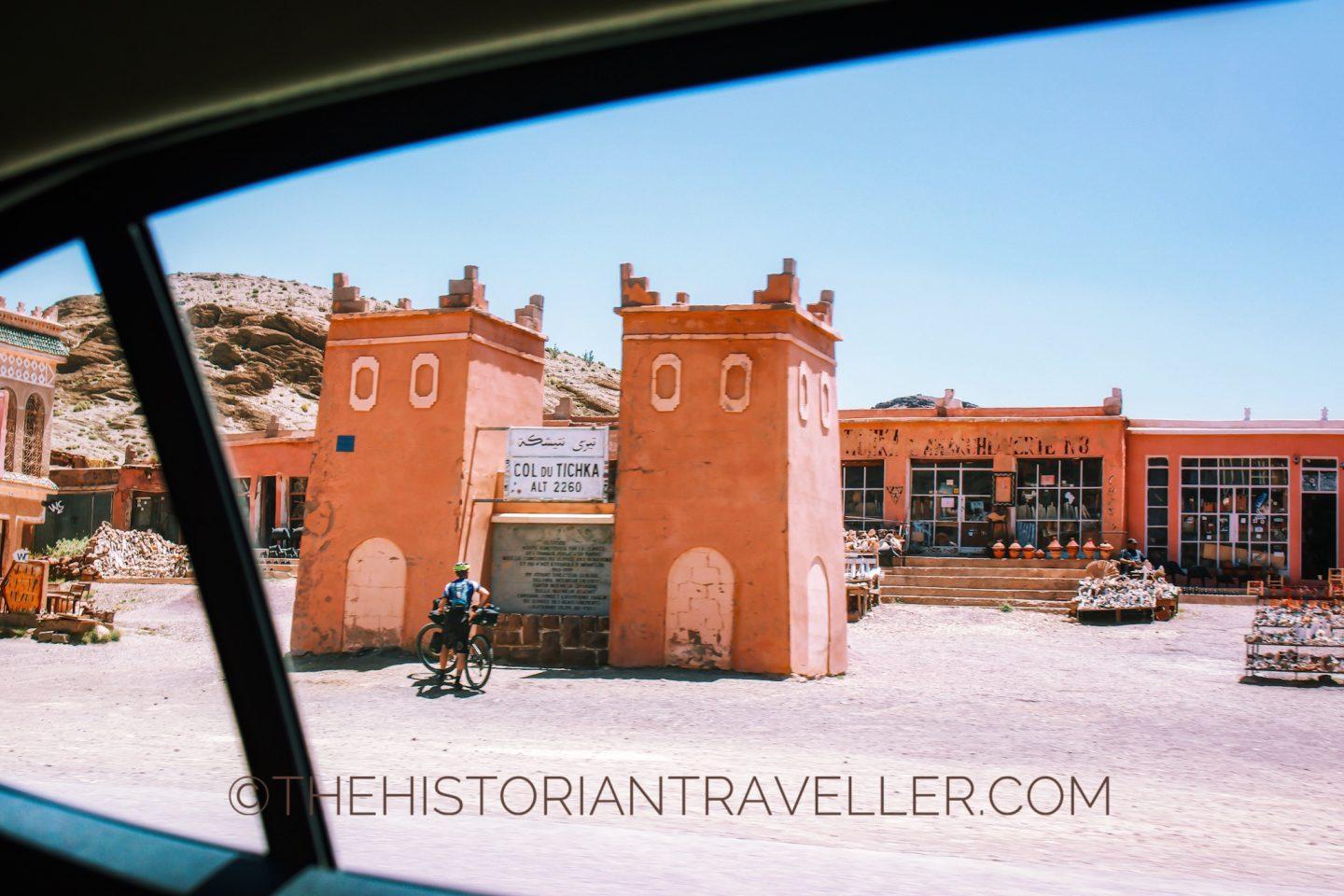
Not many people decide to actively visit the High Atlas Mountains. Indeed, for most tourists they are just a passageway in between Marrakech and Ouarzazate/the Sahara Desert. Therefore, if you decide to stop along the way, there are a few useful information to know before getting on the road!
Getting to the High Atlas Mountains
Getting to the High Atlas Mountains requires to have a car. Indeed, there is no public transport (train, coaches) that reach this part of Morocco. This because coaches crossing this part of the mountain are not made for sightseeing but to get to a specific destination. Therefore, if you are planning a road trip to the High Atlas Mountains, the best thing to do is hire a car or hire a driver (with a car). Some Grand Taxis might reach the area too. However, you might have to agree in advance your planned stops. Moreover, be sure the driver understands your plans and doesn’t make any final surprise.
The closest major city to start your road trip is Marrakech. From here, reaching the Tizi n’Tichka pass, which is more or less halfway in the High Atlas, will take around 2 hours drive. If you are driving from Fez, an overnight to Marrakech is highly recommended. This will avoid you about 7 plus hours of continuous driving.
Keep in mind that if you are not driving, but prefer to hire a driver, expect to pay a minimum of £150 per day for his service. As we were touring Morocco for 10 days we opted for a car hire from Marrakech. This costed us around £500 (including the insurance).
SEPTEMBER 2023 UPDATE. Following the Earthquake happened on 8th September 2023, some areas of the High Atlas Mountains might not be reachable. Please check with local authorities if the places you want to visit have been affected by the earthquake or the road has been closed.
Driving in the High Atlas Mountains
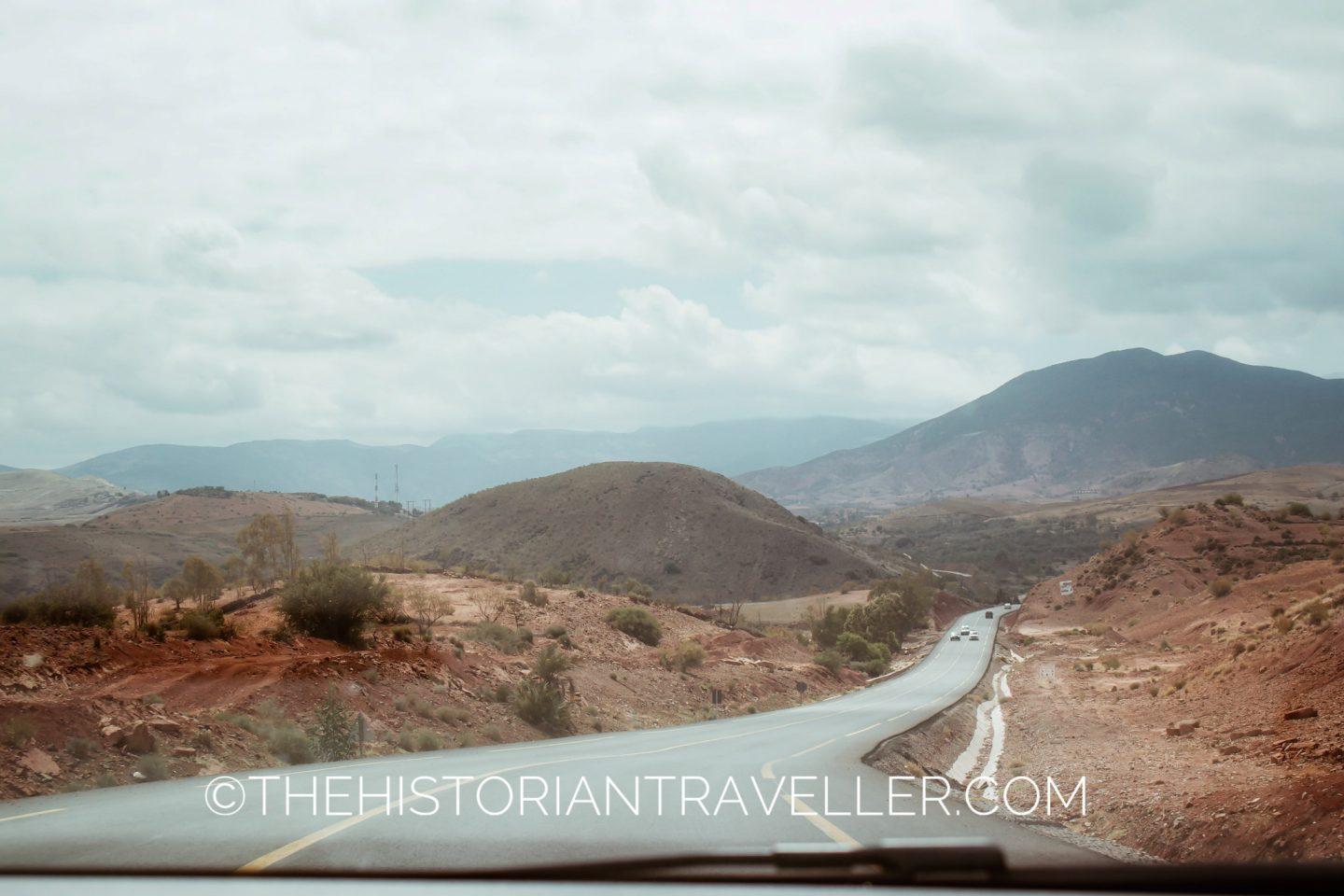
I am not a good driver, so I left the challenging duty of navigating the winding roads of the Atlas Mountains to my lovely husband. This was definitely the best choice as the tortuous mountain passes and dangerous ravines would have been completely out of my reach to drive.
If you are planning a self driving tour of the High Atlas Mountains, be certain of your driving confidence. Indeed, a single mistake on those roads can be fatal. Moreover, make sure to save on Google Maps offline all the stops along the way you would like to do as there’s no much space for spontaneous stops on the road. So, it’s better to know in advance your itinerary.
Do I need a 4×4 to drive in Morocco?
Unless you want to drive very off-road, particularly in the desert area, a 4×4 is not strictly necessary. We rented a Dacia Logan and drove excellently even the steepest mountains road. Of course, in the end this is up to you. If you feel more confident having a 4×4, go for it! But most roads are perfectly fine to drive and for the gravel roads we drove very slowly.
Roads’ condition in the High Atlas Mountains
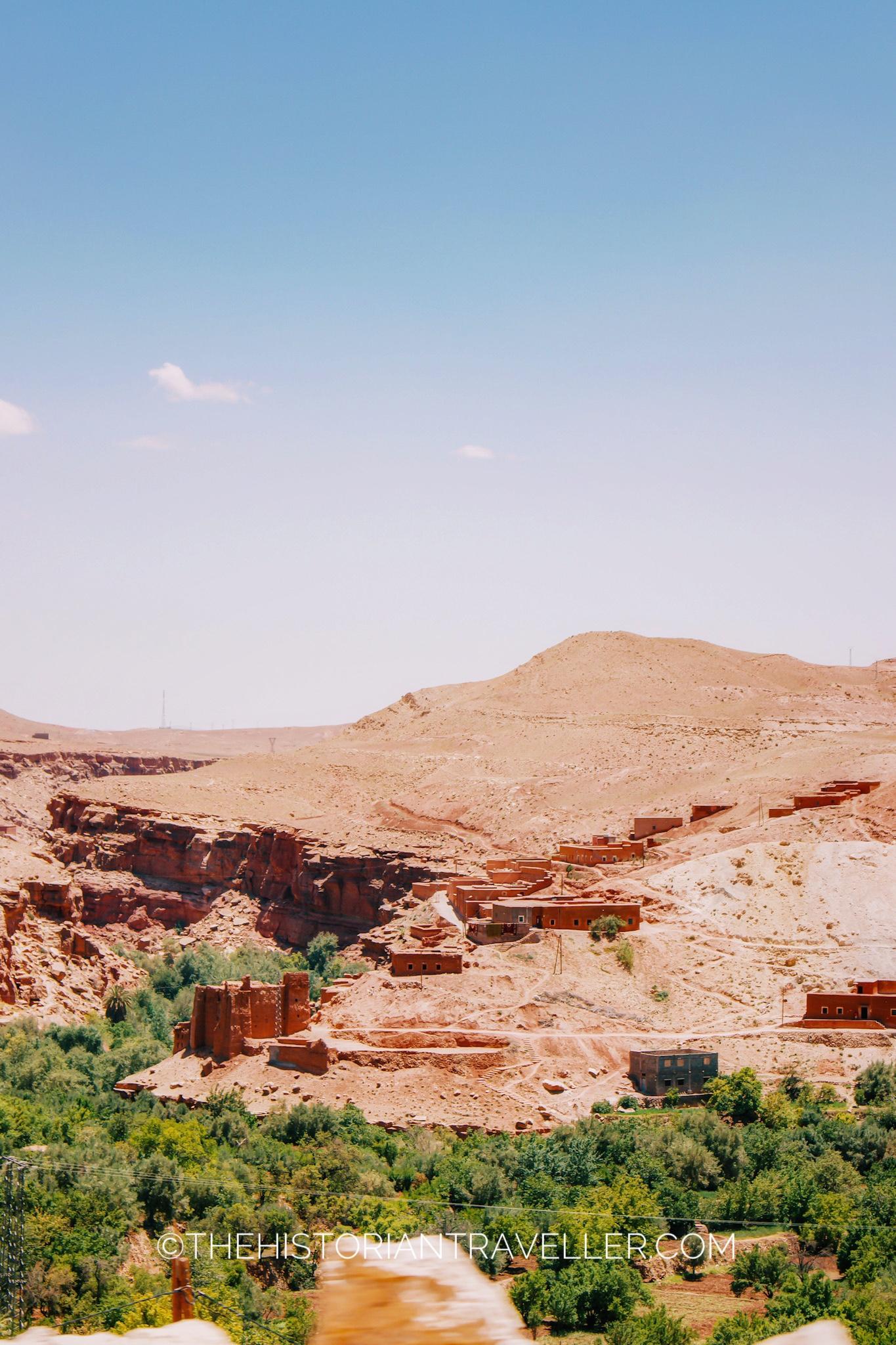
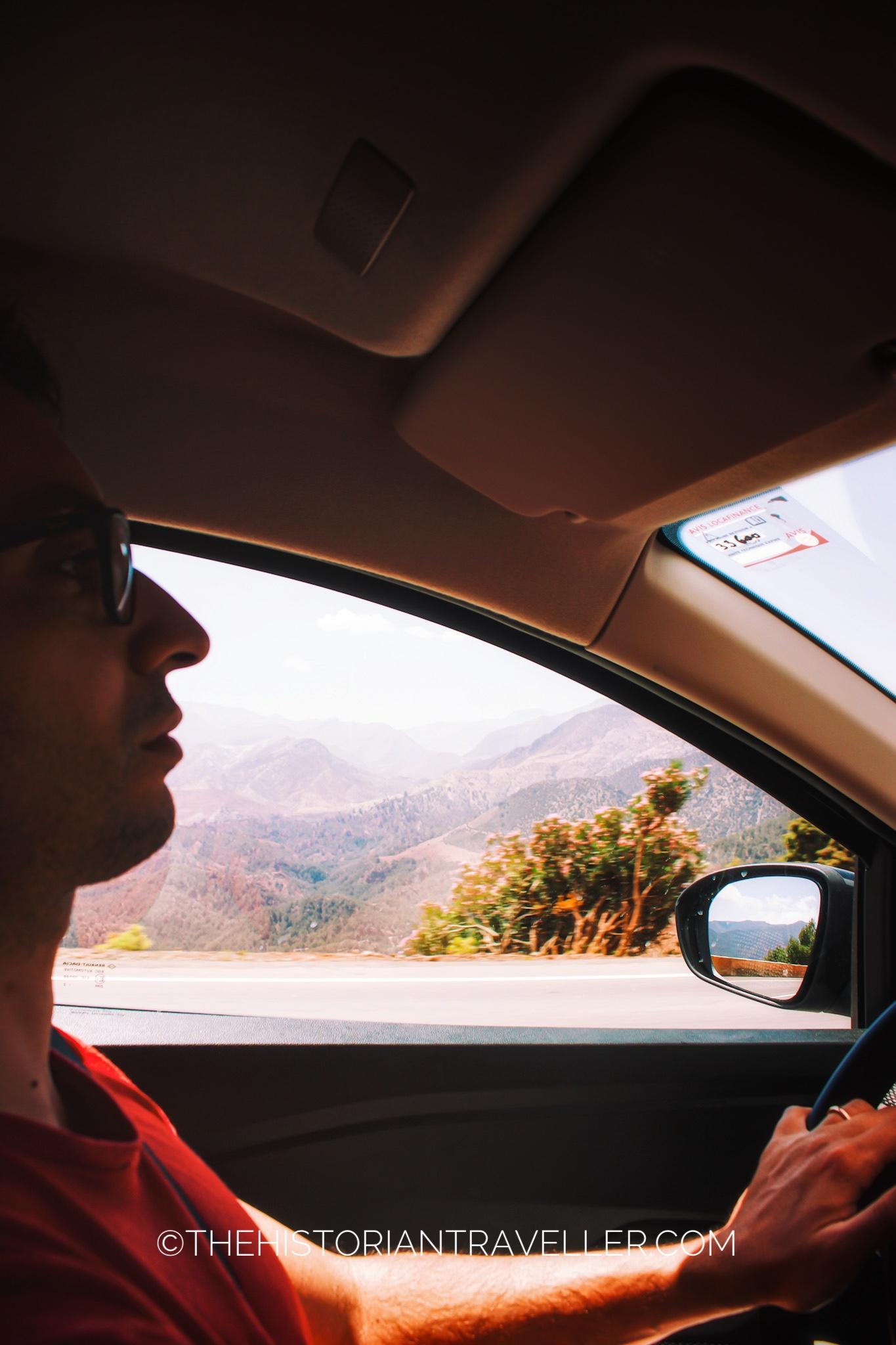
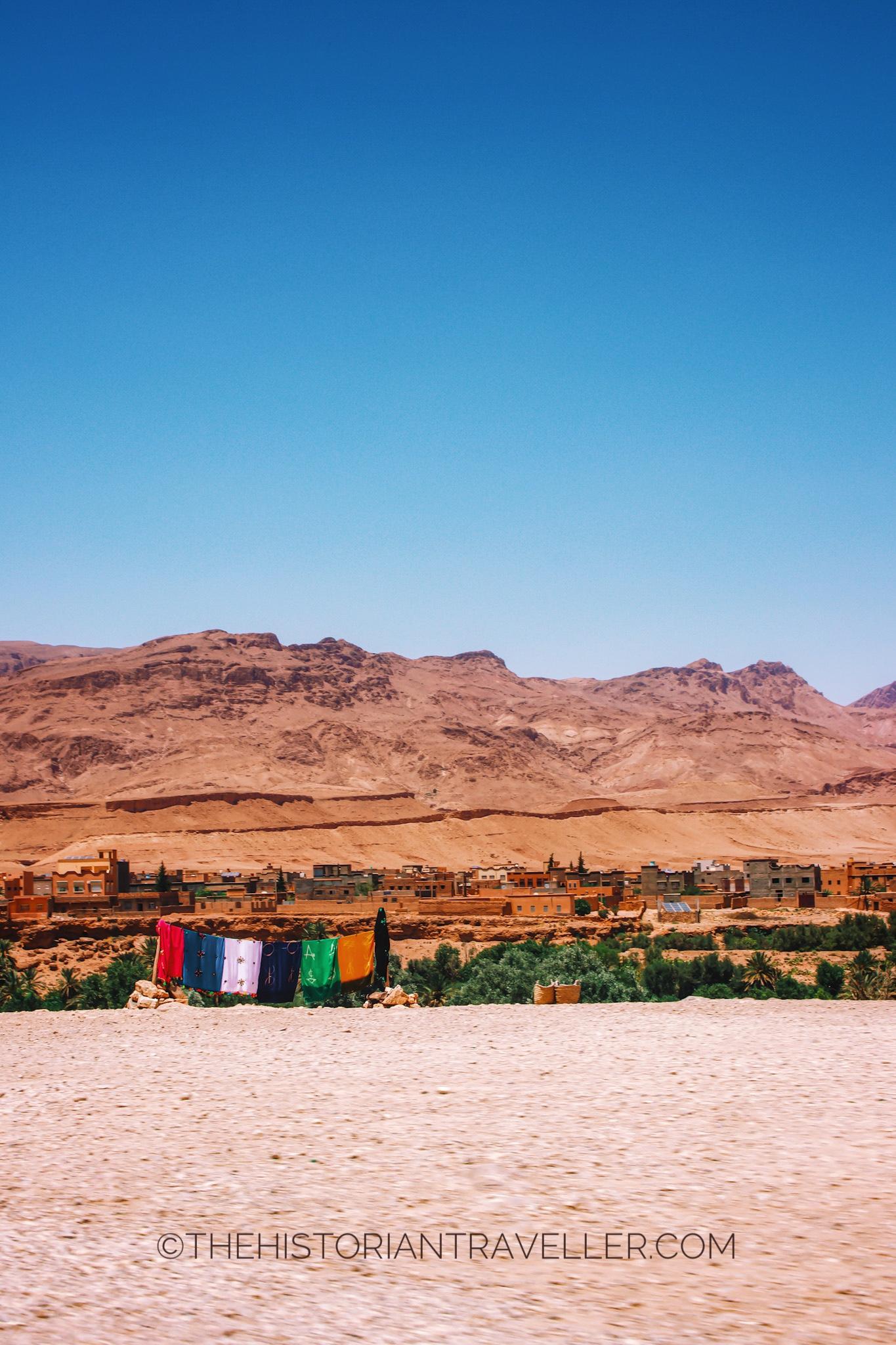
The condition of the roads is excellent for most of the driving length Marrakech-Ouarzazate. Indeed, this has been recently paved with new asphalt. Therefore there’s no risk of getting a flat tyre in the middle of nowhere (if you stick to the main road). The initial part of the High Atlas road (soon after you leave Marrakech) has still some roadworks.
This may cause a delay on the road and some uncomfortable parts to drive. Nothing major tough. From what I’ve been able to see, 90% of the road looks complete. I expect the entire road will be completed by next year as there were lots of people working hard on it!
Of course, when you’ll take a diversion, probably to visit one of the Kasbahs, don’t expect very nicely paved roads. Indeed, if you are lucky you’ll find gravel. Therefore, check your tyre pressure before going and don’t drive fast on those roads!
Most of the Kasbahs, are located in the area of Ouarzazate. In order to get there, you have to first drive up the mountain for about 2 hours, more or less until the Col du Tichka. Then, the road will start going down the pass on very winding roads until you reach a plateau leading you to Ouarzazate. This is called Draa Valley. Pay attention to the police and also local motorists who will try to overcome you on the most dangerous roads. We saw a lot of them and their speed was quite concerning. Stick to your position and drive carefully.
Tips for side Kasbahs visits
There is a high number of Kasbahs perched on the walls of the mountains. You’ll start seeing them as soon as you venture further into the mountains’ road. Some of them are in good status, some of them looks impossible to reach by car. Unfortunately, we didn’t dare that much in our itinerary. However, if you have the time and willing to visit them, make sure to mark your path before you start your driving. Indeed, the mobile reception might not be the best up there.
Best season to visit the High Atlas Mountains
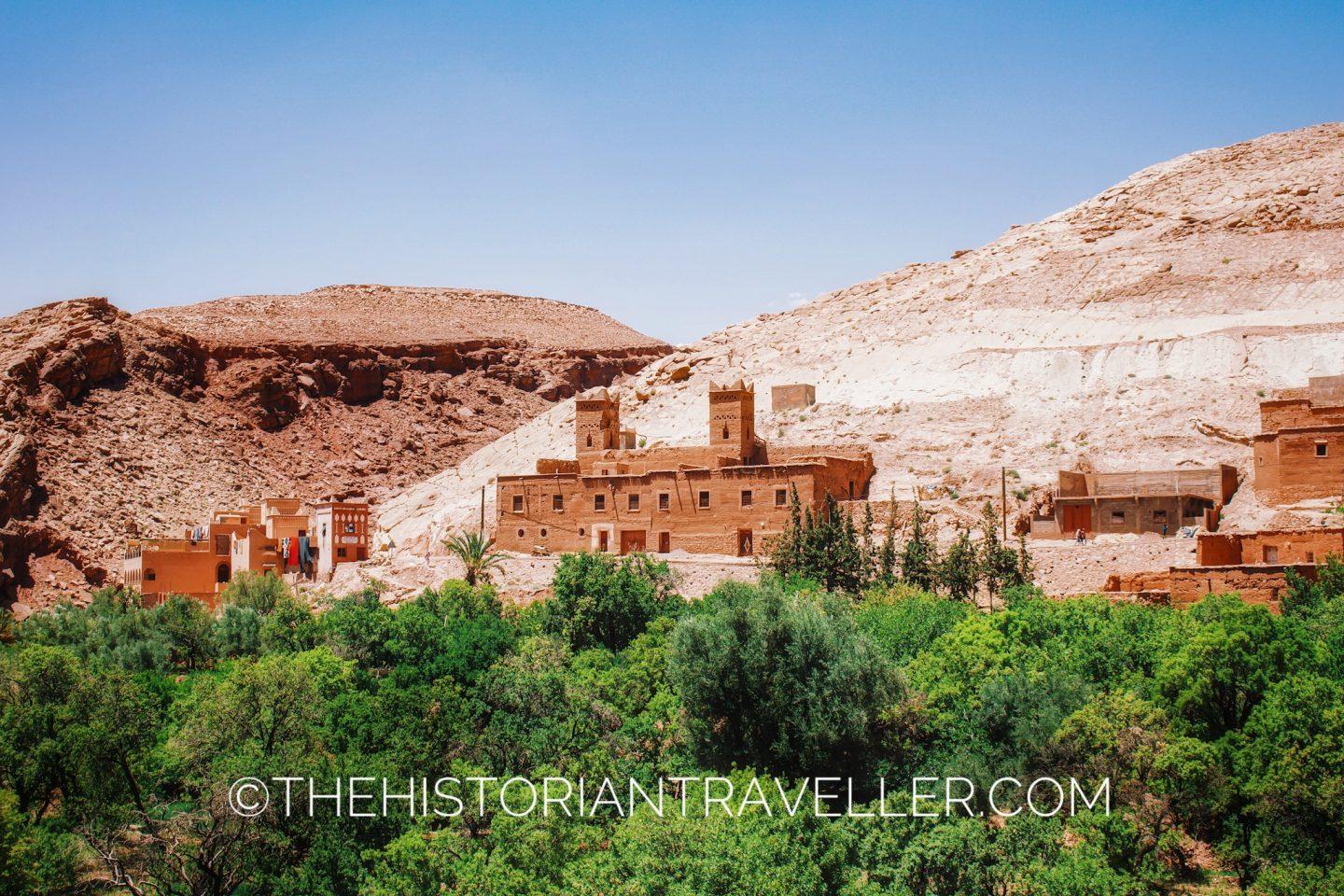
The High Atlas Mountains have two different types of Alpine climate. On the one hand the highest part of the peaks from Jbel Toubkal until Imilchil, have an Oceanic climate. This means that in winter most of the mountains will be capped in snow and road conditions might not be always optimal for a drive. Snow falls from November until April with some occasional events later in the year. Depending on the snow, roads might be closed and rainfall could potentially affect your trip.
On the other hand, the central part of the High Atlas, from Azilal to Ouarzazate have a completely different climate. Indeed, Continental semi-arid climate make sure this lower part of the mountain have less precipitations with warm to cool winters and sometimes extremely hot summers. Nevertheless, this area is strongly subjected to the weather in the high peaks as you can’t access it in any other way.
Having said so, I would say that late spring/summer might be the optimal seasons to travel across the area of the High Atlas Mountains. Early Autumn might be still a borderline period depending on the weather conditions. Nevertheless, due to the rapid climate change, seasons have become now unpredictable. This will bring uncertainty even in previous “safe to travel” seasons and a higher likelihood of sudden adverse events like flash floods or extreme hot weather.
Seasonal dangers of the High Atlas Mountains
One of the dangers of this part of Morocco is related to rainfall. Indeed, being an area with multiple fluvial sources, the High Atlas Mountains become extremely dangerous with summer sudden thunderstorms and winter heavy rains. This will cause enormous mass of waters descending rapidly the peaks into the lower valleys prompting dangerous flash floods. To be safe, is always better to double check the weather conditions before venturing into the mountains. Moreover, make sure your hotel is aware that you are traveling by car and have a plan B in case of sudden strong rain that could make your trip dangerous.
What to wear in the High Atlas Mountains
Keeping in mind the variation in climate between the highest and central parts of the High Atlas Mountains the best solution is always wearing layers both in cold and warm seasons. If you travel in late Autumn and Winter heavy coats and thermal layers will be essential, even if you go to the central areas. In summer, I didn’t notice a great variation of temperature in between the high peaks and Ouarzazate. Nevertheless, I never hiked the Toubkal. So I am not sure it would it probably be a little fresher up there.
Compared to Marrakech, Ourzazate was a little fresher and windier. But temperatures in June were still around 30 degrees.
If you are a woman planning to visit some of the more isolated villages up in the mountains, I would recommend dressing more conservatively. This means, no shorts or uncovered shoulders. These places are not frequently beaten by tourists and you don’t want to cause any offence. Ait Benhaddou and Ouarzazate are more open to Western fashion styles. However, I wouldn’t feel going around in short either. I was personally confident enough that a midi summer dress wouldn’t cause any trouble so I decided to go for it and it was ok. Just to be sure, I had a light jacket with me in case of need.
Men are pretty fine with everything (unless they want to go around shirtless!).
How many days to I need to explore the Kasbahs in the High Atlas?
If you are planning to explore all the 1000 Kasbahs of the region, a week wouldn’t probably be enough. However, it’s realistically challenging to visit them all and some of them are unaccessible or in terrible conservation status. The best thing to do is doing your homework and plan how many Kasbahs you want to visit. This will determine how many days you will stay in that area.
You should be aware that most Kasbahs have a similar (almost the same I would say) architecture. Therefore, unless you are planning a detailed study on the topic, from a tourist point of you is not strictly necessary to visit as many as you can.
We personally visited 5 different Kasbahs and we organised these visits in 2 different days.
Exploring the Road of Thousand Kasbahs in Morocco
You are know very knowledgeable about what a Kasbah is and where to find different type of Kasbahs around Morocco. So it’s now time to explore! As said before, visiting all the 1000 Kasbahs of the High Atlas Mountains was a little too ambitious for my 10 day itinerary in Morocco. Therefore, I made a list of the Kasbahs I really wanted to see as a first timer in Morocco. Only 5 made the cut and I managed to visit them all in 2 days.
If you are planning to visit additional Kasbahs and want to have some suggestions, I got you covered! Indeed, as you are aware, my original plan was more extensive, so I had a long list of Kasbahs I wanted to visit. Therefore, I created a map to visually locate them all and help me planning the itinerary.
How to use the map to build your road a thousand Kasbahs itinerary
I decided to exclusively share this map here as a precious instrument for planning your own Road of a Thousand Kasbahs itinerary in Morocco. Be aware this map doesn’t intend to be an exhaustive list of all the Kasbahs available in Morocco. I mapped the ones I believe are more interesting to visit and, most importantly, visitable. Indeed, while touring Morocco I’ve seen dozen of Kasbahs that I couldn’t locate anywhere on the map and didn’t look properly accessible. These were hanging on dangerous cliffs, towering somewhere on the top of a hill or simply reused by the village inhabitants for different purposes.
Therefore, it’s more realistic to say that even if there are a thousand Kasbahs in the High Atlas Mountains, not more than 100 of them are currently trackable on the map and open to visitors.
The map above has some lovely icons that shows you the exact location of a Kasbah. These have 3 different colours:
- Red are the Kasbahs in the High Atlas I visited for the purpose of this blog. These are discussed below.
- Green are other potentially visitable Kasbah around the Central-High Atlas that I haven’t visited (even if they were on my list). Please note these might be in difficult to reach locations or be part of restaurants/converted into hotels.
- Blue are the Kasbahs located in different areas of Morocco. These are not Amazigh fortifications but mostly fortified sections of the medina including royal premises.
If I find a new Kasbah that is worth to visit, I will add this to the map.
Road of Thousand Kasbahs itinerary
Below, you’ll find the 5 Kasbahs we visited in the High Atlas mountains and some tips and details for you visit.
Telouet Kasbah
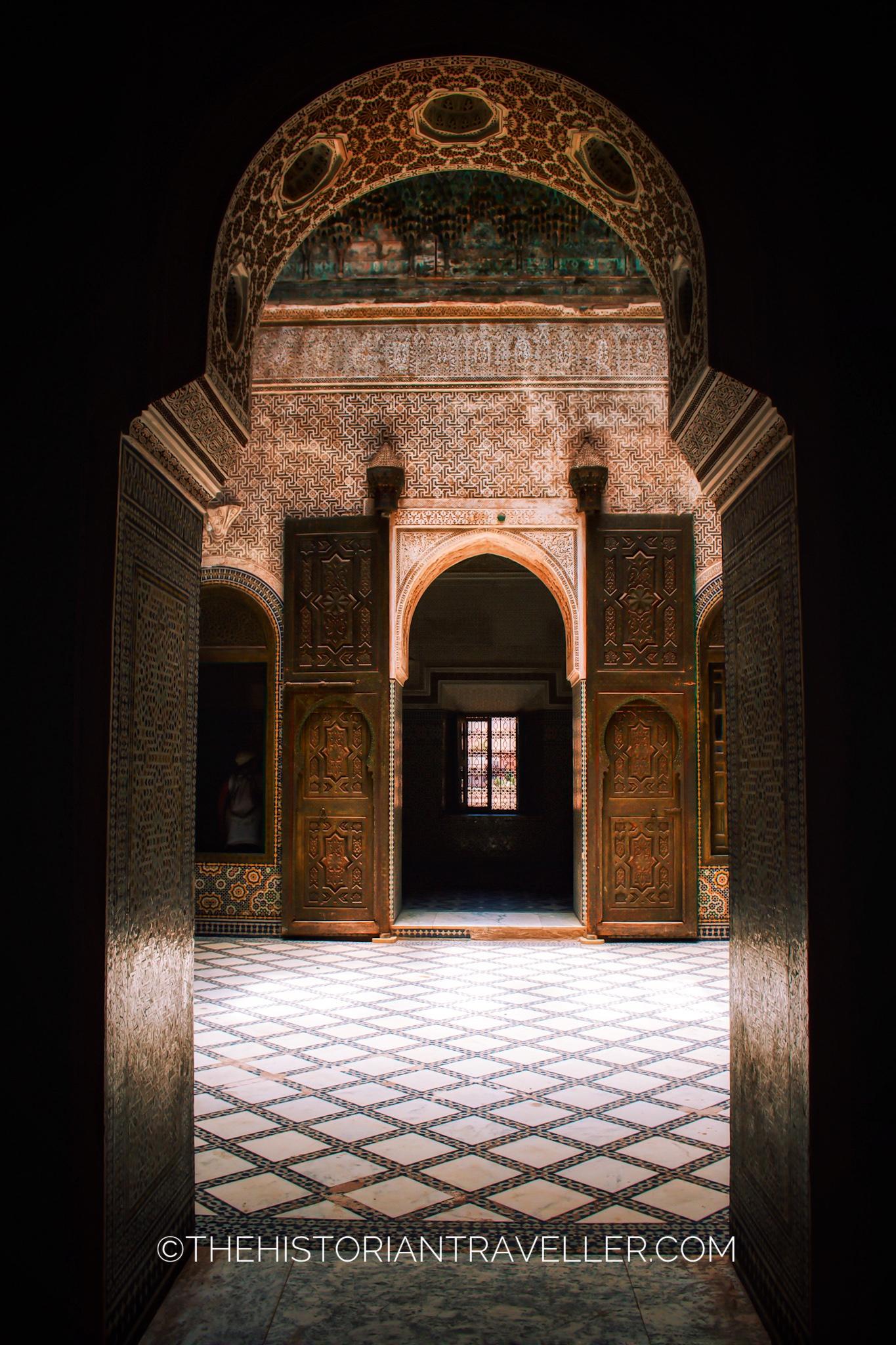
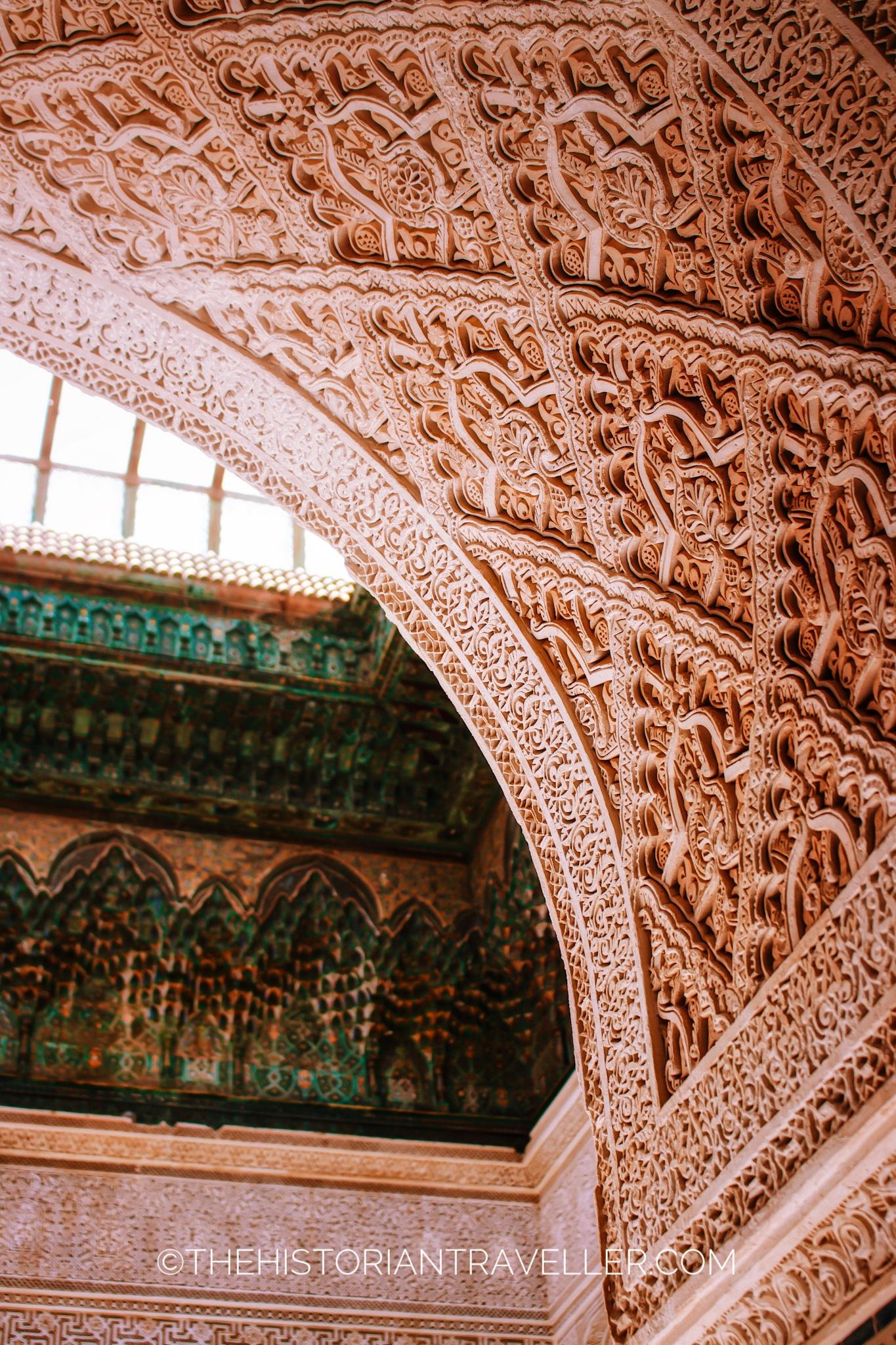
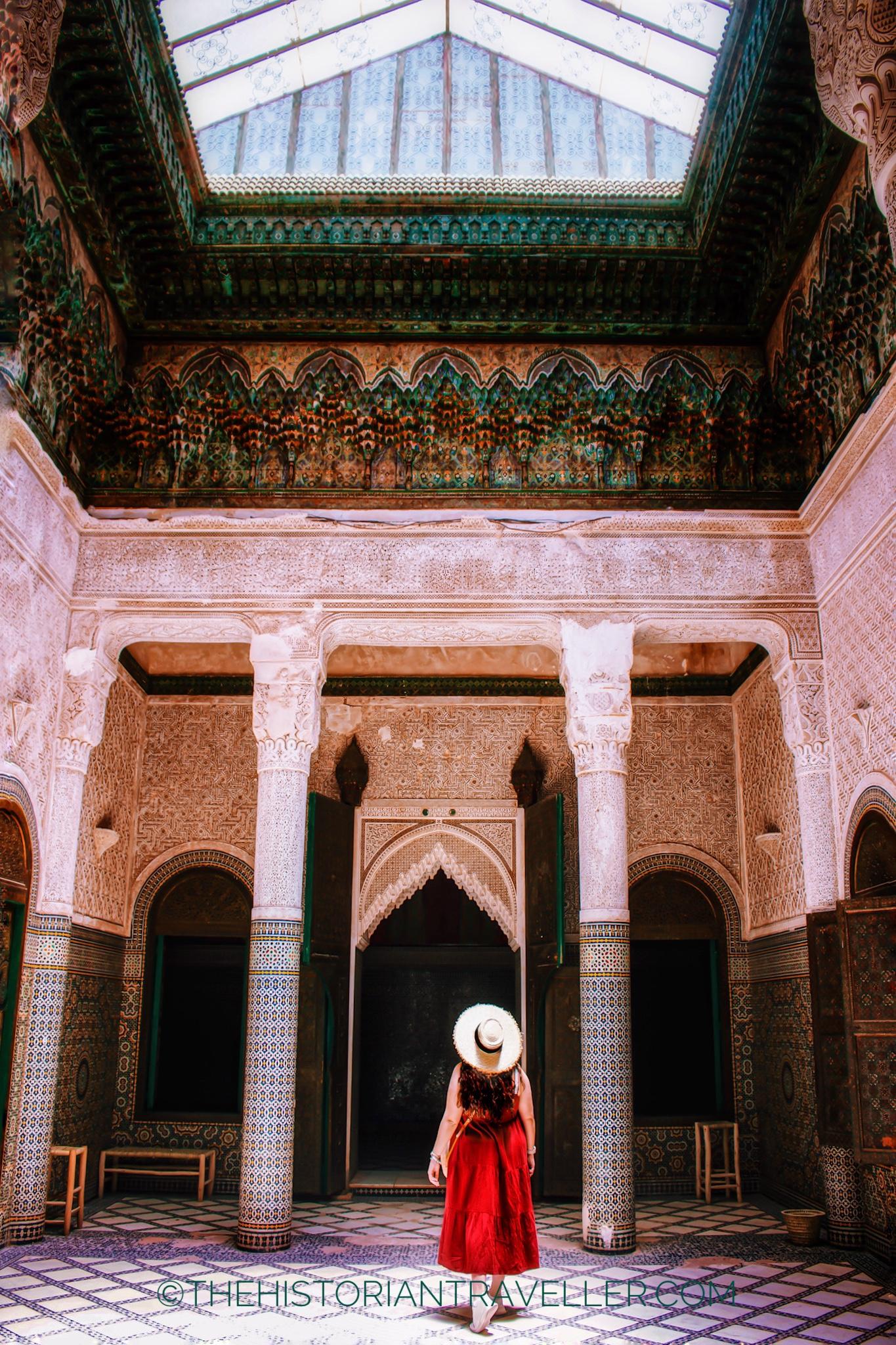
Don’t be fooled by the exterior crumbling appearance of Kasbah Telouet. Indeed, this place is like a sort of Easter Egg: it contains a marvellous surprise inside! Kasbah Telouet sets on what used to be one of the most important caravan routes in between the Sahara and the Atlas Mountains. Indeed, the Telouet village was a pivotal place for commerce before the road construction through the Tizi n’ Tichka pass. Towering at a heigh of 1,800 mt., this fortification belonged to the powerful Thami el Glaoui famous as the “Lord of the Atlas”.
Most of the structures of the Kasbah, date back to the XVIII. Nevertheless, you can only visit the most recent construction dating 1860. This because great part of the property is in advanced state of deterioration. Indeed, after the decline of the Glaoui’s family fortune as consequence of their support to the French Protectorate, the Kasbah has been abandoned for a long time.
One of the most amazing sights of this Kasbah are the two decorated rooms. It is said these rooms were built in just 3 years by more than 300 craftsmen coming from all over the country.
This was probably one of my favourite Kasbahs as the contrast between its exterior and interior architecture is so strong that you can’t literally stop to say “WOW!”.
Visiting the Telouet Kasbah
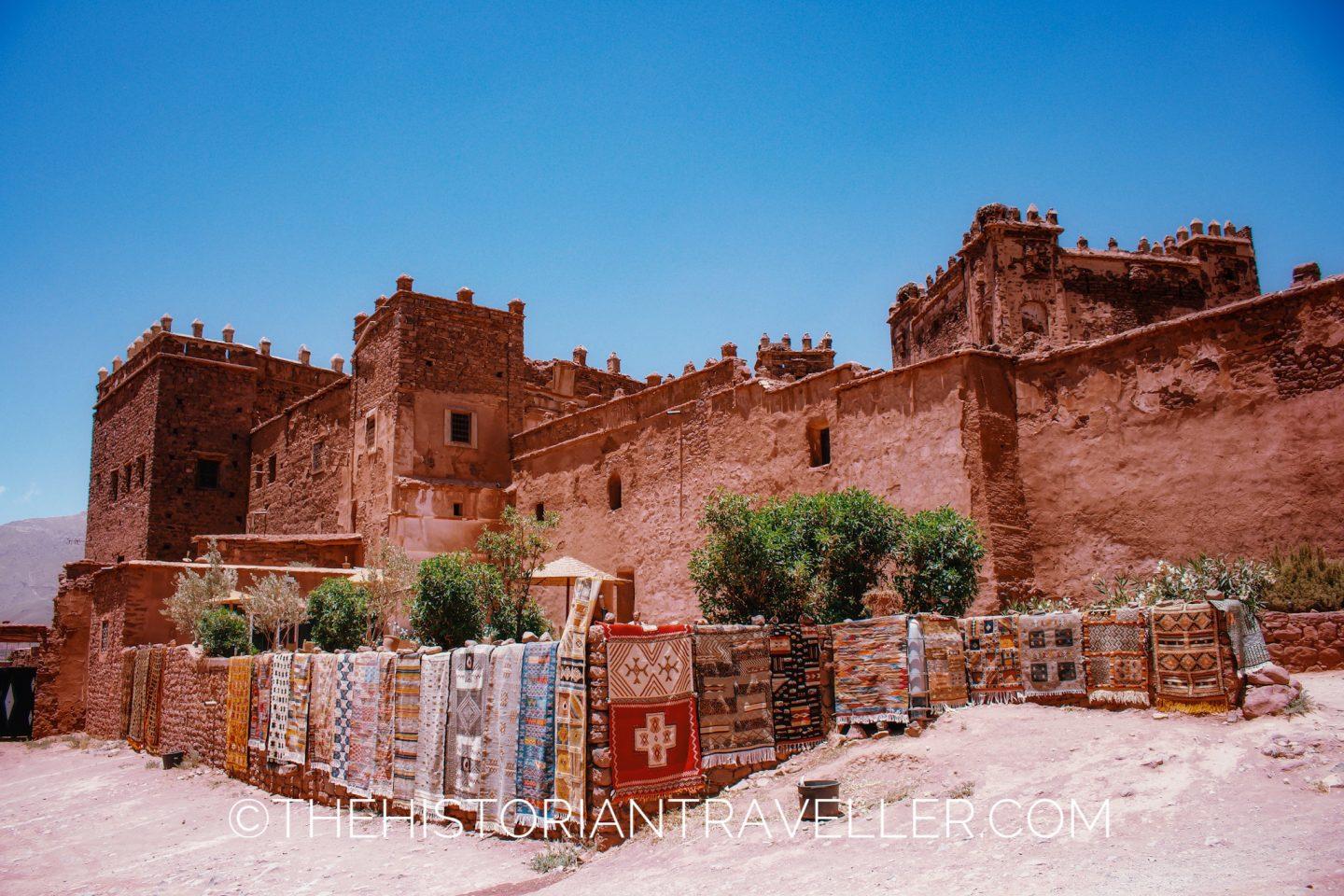
You can find Telouet Kasbah between Marrakech and Ouarzazate. To reach it from Marrakech will takes 2 hours and 32 mins (by car). If you are traveling from Ouarzazate this is 1 hour and 35 mins drive. If you are driving from Marrakech, you have to undertake the winding N9 and turn at the P1506 before Aguelmouss. Pay a lot of attention to Google Maps as the turn at P1506 appears quite suddenly on the right and, in this mountainous roads, is not easy to get back if you do a mistake.
Unfortunately the road leading to the Kasbah is not as good as the N9, particularly the last part made entirely of gravel. We even thought to leave the car randomly on the street and proceed on foot. However, as soon as you enter the street leading to the Kasbah, you will see a small car parking in better condition of the road. This is NOT the Kasbah parking (this is located on the right proceeding forward). However, the road was so bad we decided to not risk our wheels and proceed on foot from there. It was a 3 mins walk.
Of course, this parking is “guarded” so the guy who’s there will expect a little tip.
The zellige rooms are heavily guarded. I had the impression they fear people stealing the precious decorations. A guy literally followed us from the corridor and decided to watch us from distance only when he acknowledged we were just taking innocuous pictures.
Address and fees
Kasbah de Telouet, P1506, Telouet, Morocco
The entrance to the Kasbah is just 20 MAD, a steal considering how beautiful it is inside! The fee has to be paid rigorously in cash. Remember this as there won’t be ATMs until you reach Ouarzazate.
Kasbah Tebi and the Ksar of Aït Benhaddou
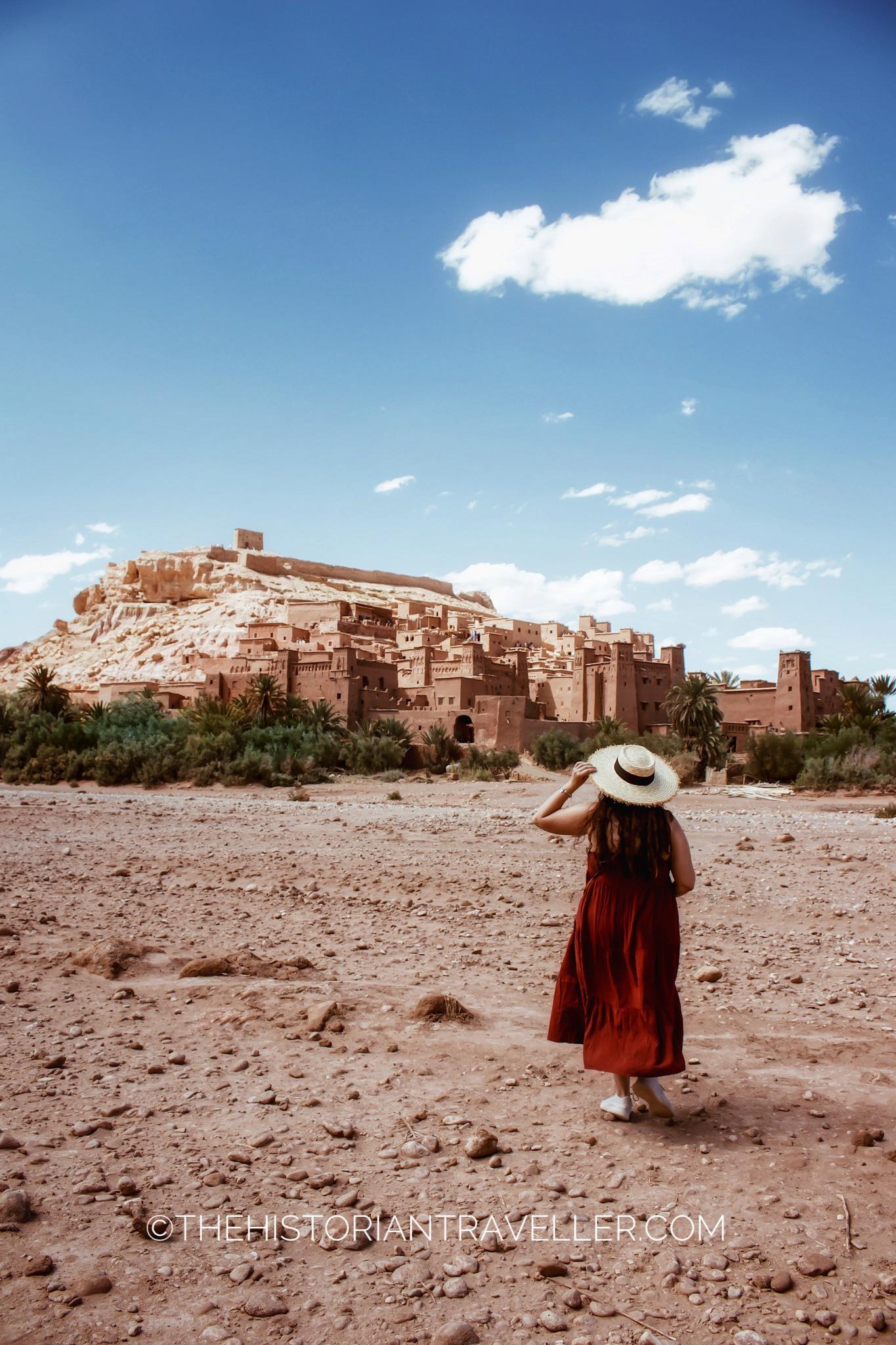
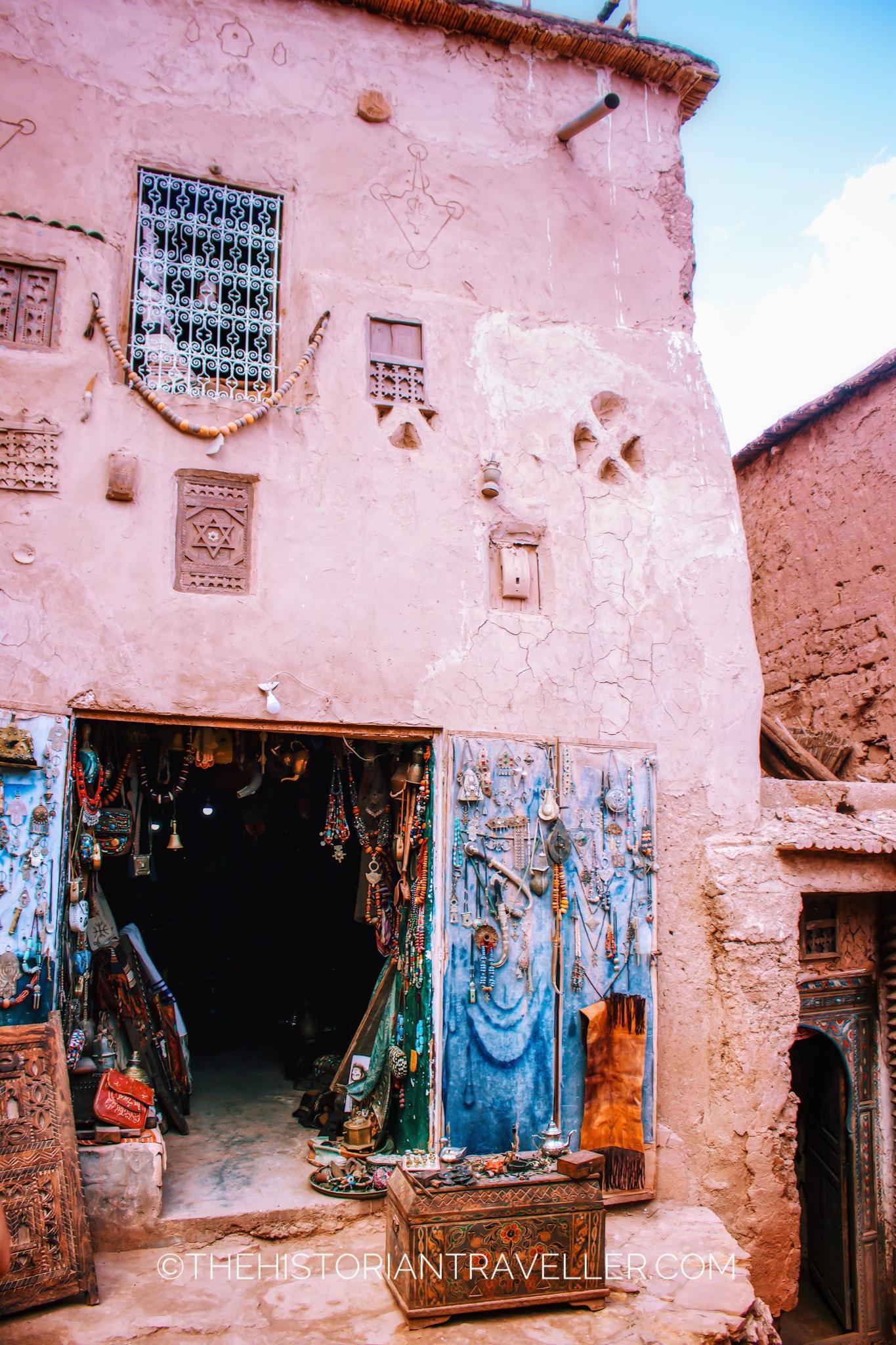
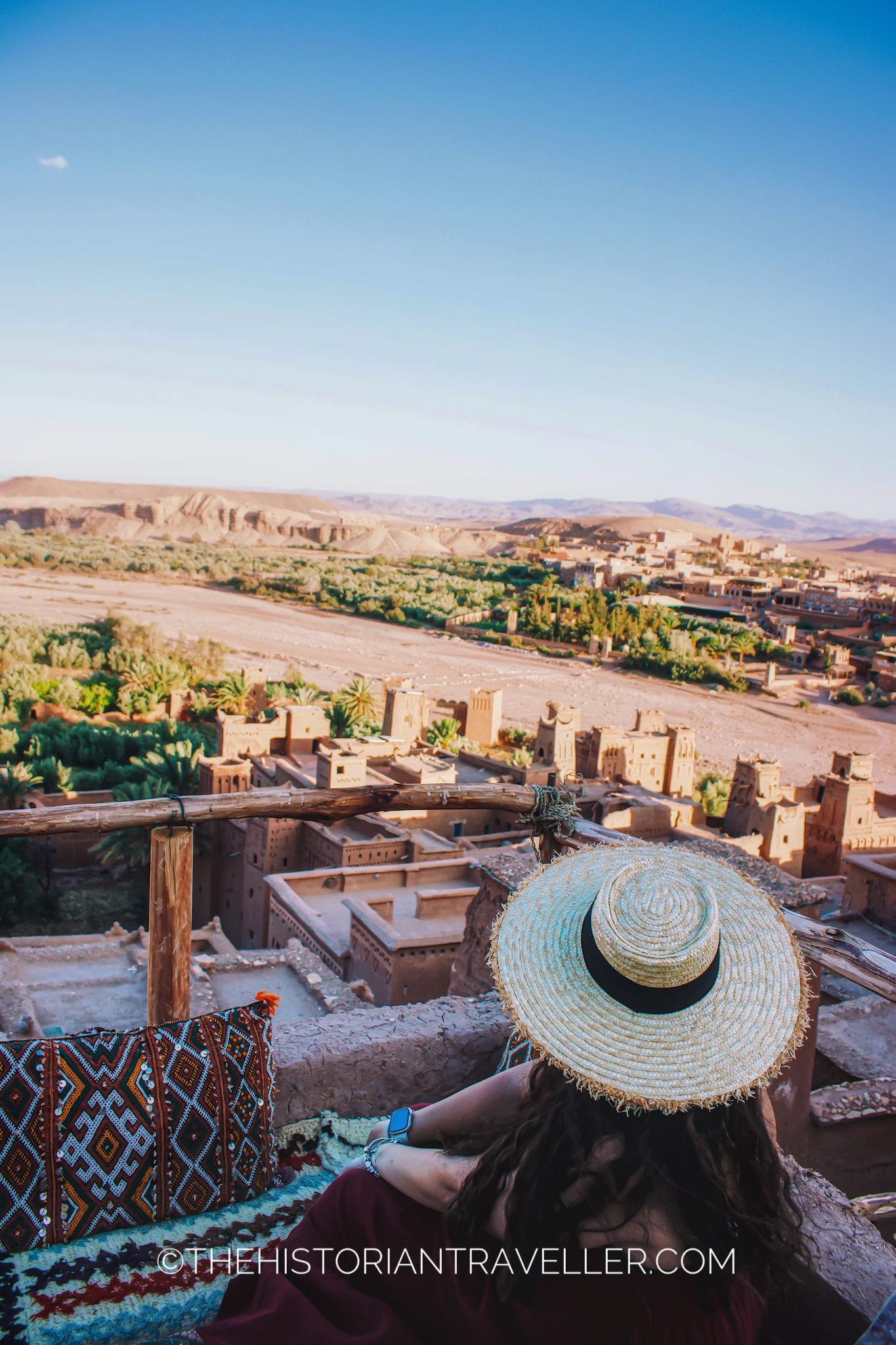
The fortified village of Aït Benhaddou is probably one of the most visited locations in Morocco. Whether you are doing an itinerary of the Moroccan Kasbahs or just touring Morocco, this place will likely be on you bucket list. Made famous by several Hollywood productions and tv series, (including the Gladiator and Game of Thrones), Aït Benhaddou is a UNESCO world heritage site excellently preserved since the 17th century.
The fortification is made of two main parts: the ksar in the upper part of the hill and the kasbah in the lower part closer to the Ounila River. The ksar, is the actual village protected by the walls and its Kasbah. It’s made of several dwellings and lovely decorated shops. Most of these constructions currently host souvenir shops, cafes and local art-crafts. The lower part of the village is occupied by the Kasbah.
Kasbah Tebi
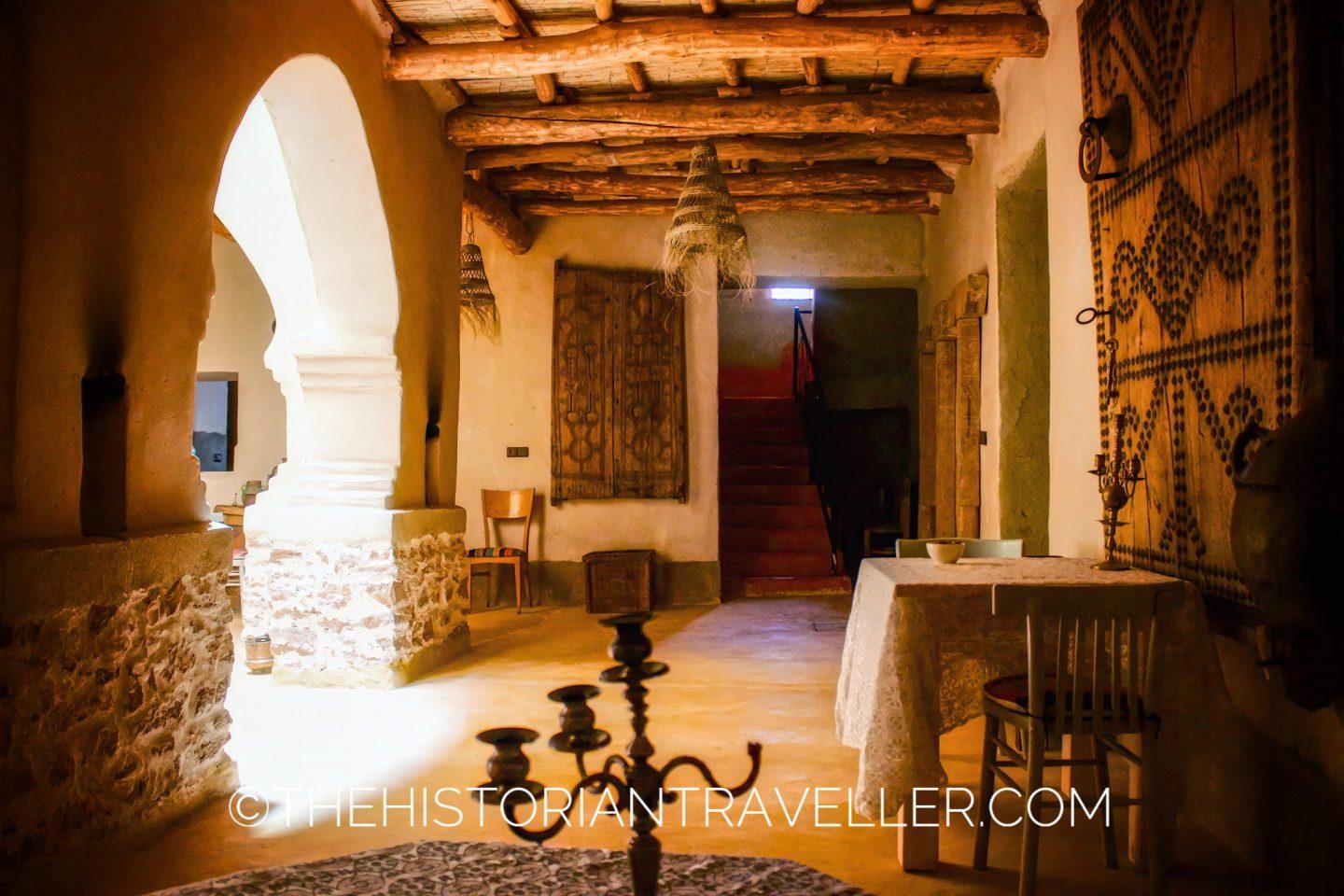
The Kasbah of Aït Benhaddou is called Kasbah Tebi. This was the name of the grandfather of Mr Mohamed, its current owner. His family inhabited the Kasbah for more than 400 years and now his and his brothers (5 families in total) are the last ones who continues to live in the ksar of Aït Benhaddou. Not many people know that you can actually sleep in the Kasbah! Indeed, Kasbah Tebi is a lovely guesthouse within one of the most unique settings in Morocco.
The peculiarity of Kasbah Tebi is that is maintained in its original Berber style, this means that there is no electricity (except for the basic needs). Spaces are enlighten by natural light in the morning and candlelit at night. It’s a very suggestive environment and a once-in-a-lifetime experience.
Tips for visiting Aït Benhaddou
As we were guests of Kasbah Tebi, we had a privileged access to Aït Benhaddou from one of the private Kasbah’s entrances. Nevertheless, regular tourists have to access the village from one of the four different fortified access. This has a cost of 20 MAD, which are generally used by Mr Mohamed’s family and the shops’ owners to renovate the premises. Indeed, the whole village is made entirely of mud and earth materials and needs constant effort to remain in safe conditions.
When we arrived around 2 pm, we noticed the village was full of people going up and down. There were queue for taking pictures and entering the tea houses with the best views. This notwithstanding it was mid June with about 38 degrees under the sun.
So, Mr Mohamed gave us the most precious tip. He told us that after 6 pm there are usually no tourists and we could actually have the village all for ourselves. With this plan on our mind we headed to Ouarzazate in the afternoon and returned to the kasbah after 6. This was the best decision ever. No queue, no crowds around. We had a relaxing tea in one of the nicest tea house with a wonderful view on the valley and we loved it.
Therefore, if you want to stand the crowd, go later in the afternoon!
Address
Kasbah Tebi, Ksar Aït Benhaddou – 45100 Ouarzazate, Morocco
Kasbah de Tifoultoute
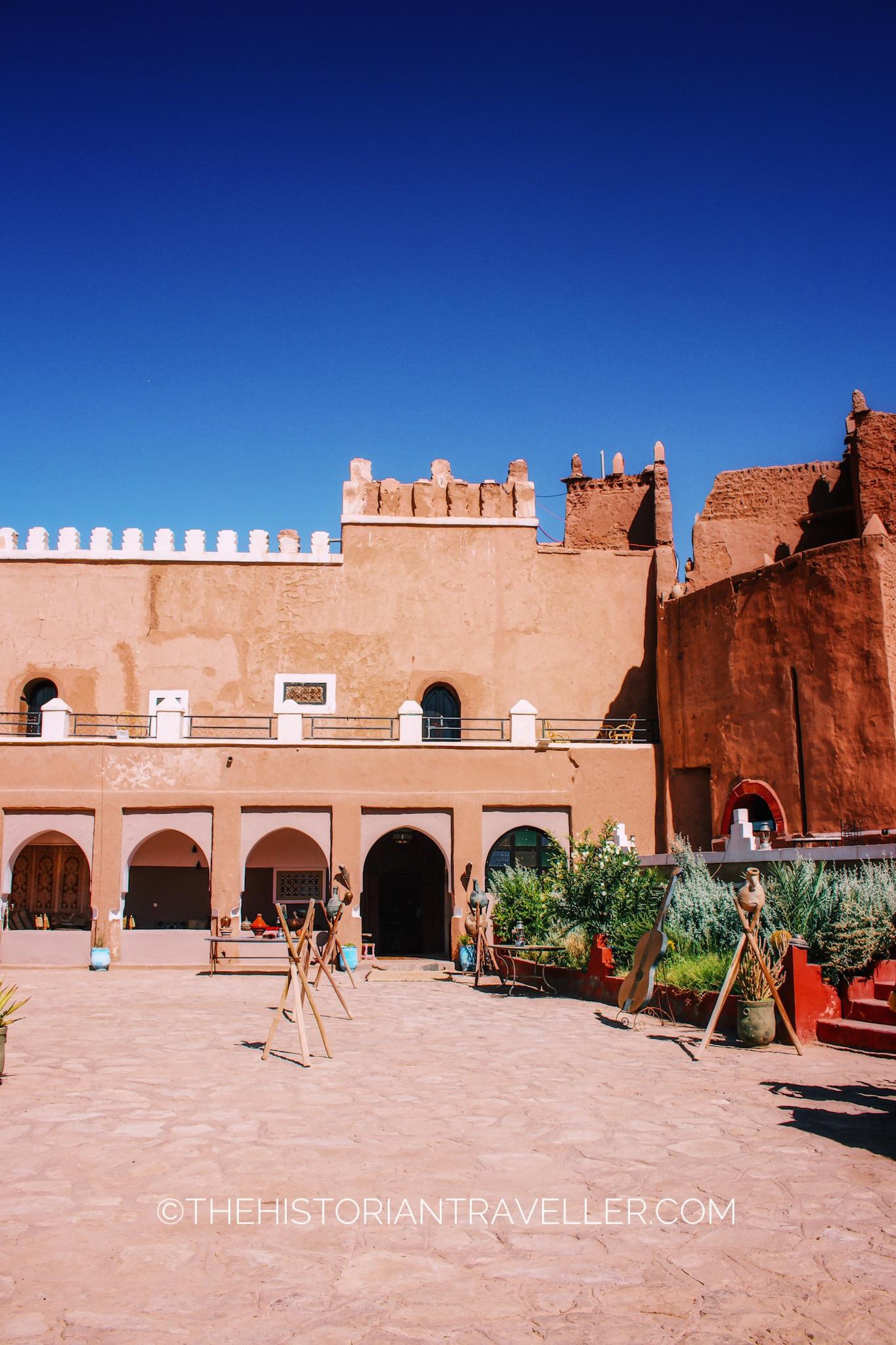
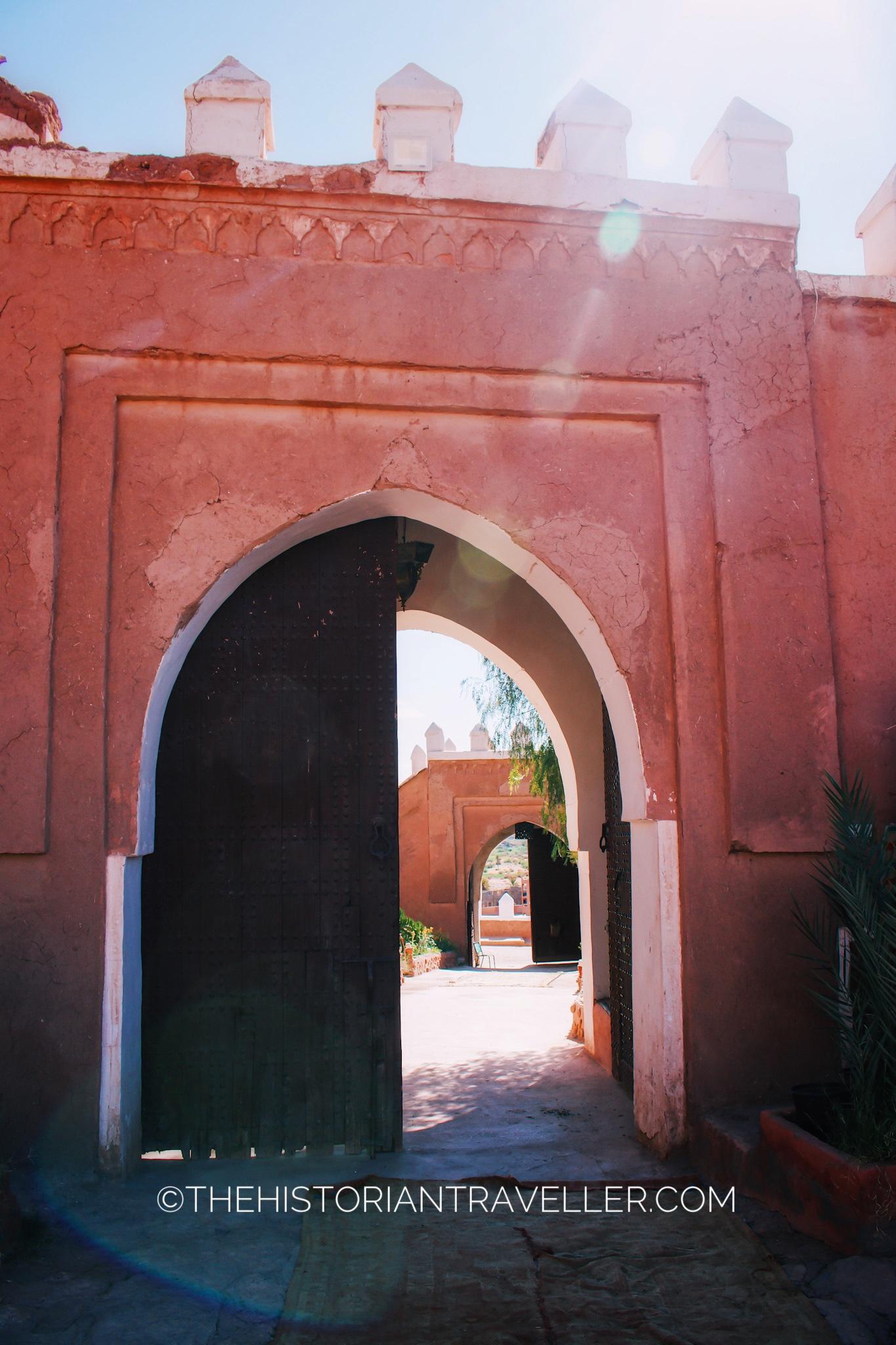
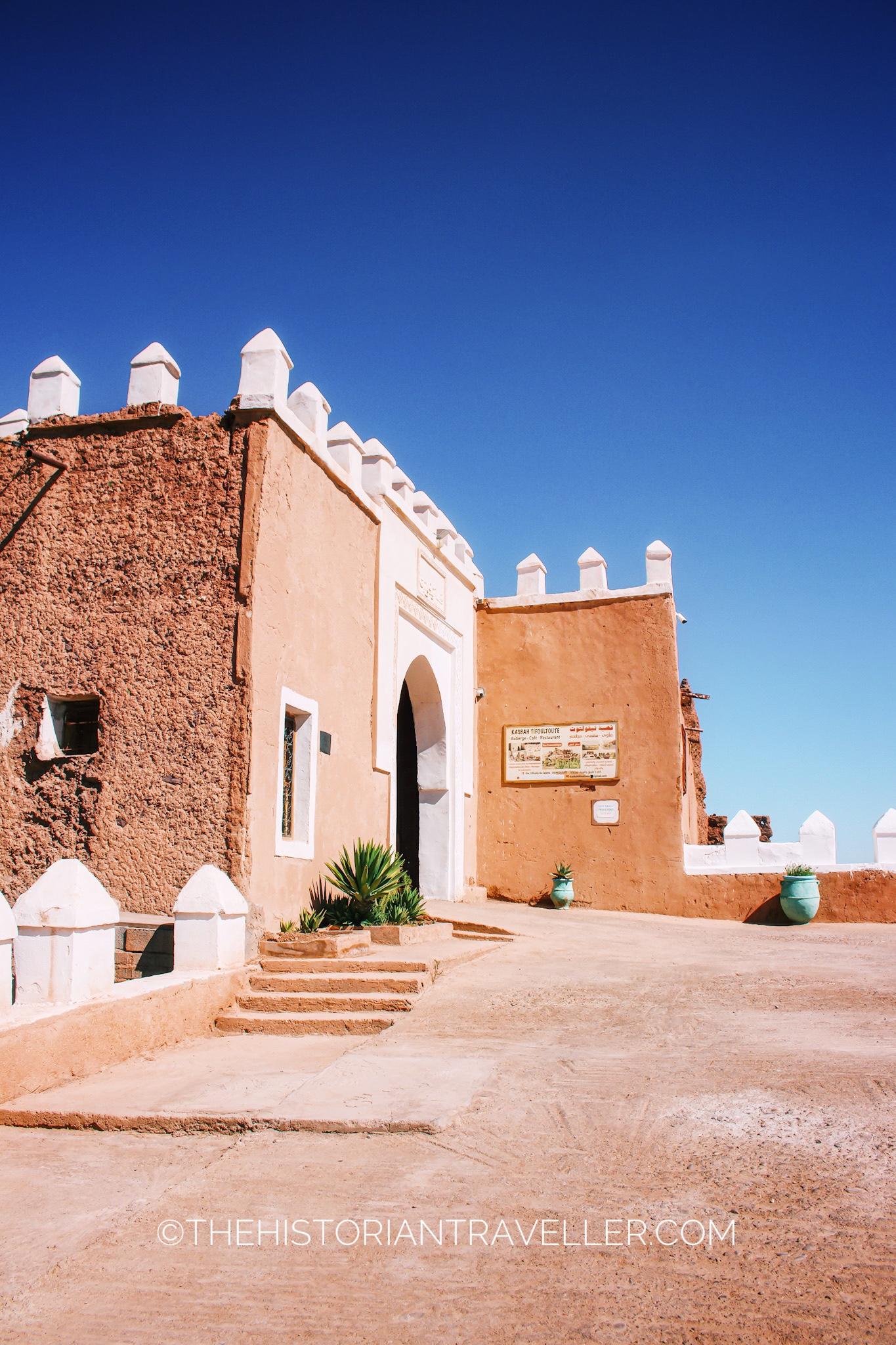
Just at 8 km from Ouarzazate, the Kasbah of Tifoultoute shares a similar history to Telouet Kasbah. Indeed, it dates back to the 17th century but belonged to the Glaoui’s clan through the 18th century until it’s abandonment.
The Kasbah is now divided into two distinct sections. The old, historical one, which has a very suggestive view from the road, and the modern part. The latter has been turned into a restaurant and guesthouse.
The entrance is 20 MAD. However, when we arrived it was completely desert. Not sure why. We’ve been around the whole property, no one chased us nor we couldn’t find someone to pay the entrance fee. Just to be sure, we didn’t access the top floors. Indeed, I wasn’t sure they were open to the public.
To be honest, our visit was very quick and this was my least favourite Kasbah. I didn’t like the way it was modernised. Indeed, the modern part clashes with the old one in a very unaesthetic way. In this regard, it doesn’t maintain the basic principles of Berber Kasbahs’ architectures, which is that of using walls made of mud and earthly materials. I think the historical value of the property is a bit lost from a structural point of view.
Address
W2G5+JVM, P1516, Ouarzazate 45000, Morocco
Kasbah Taourirt
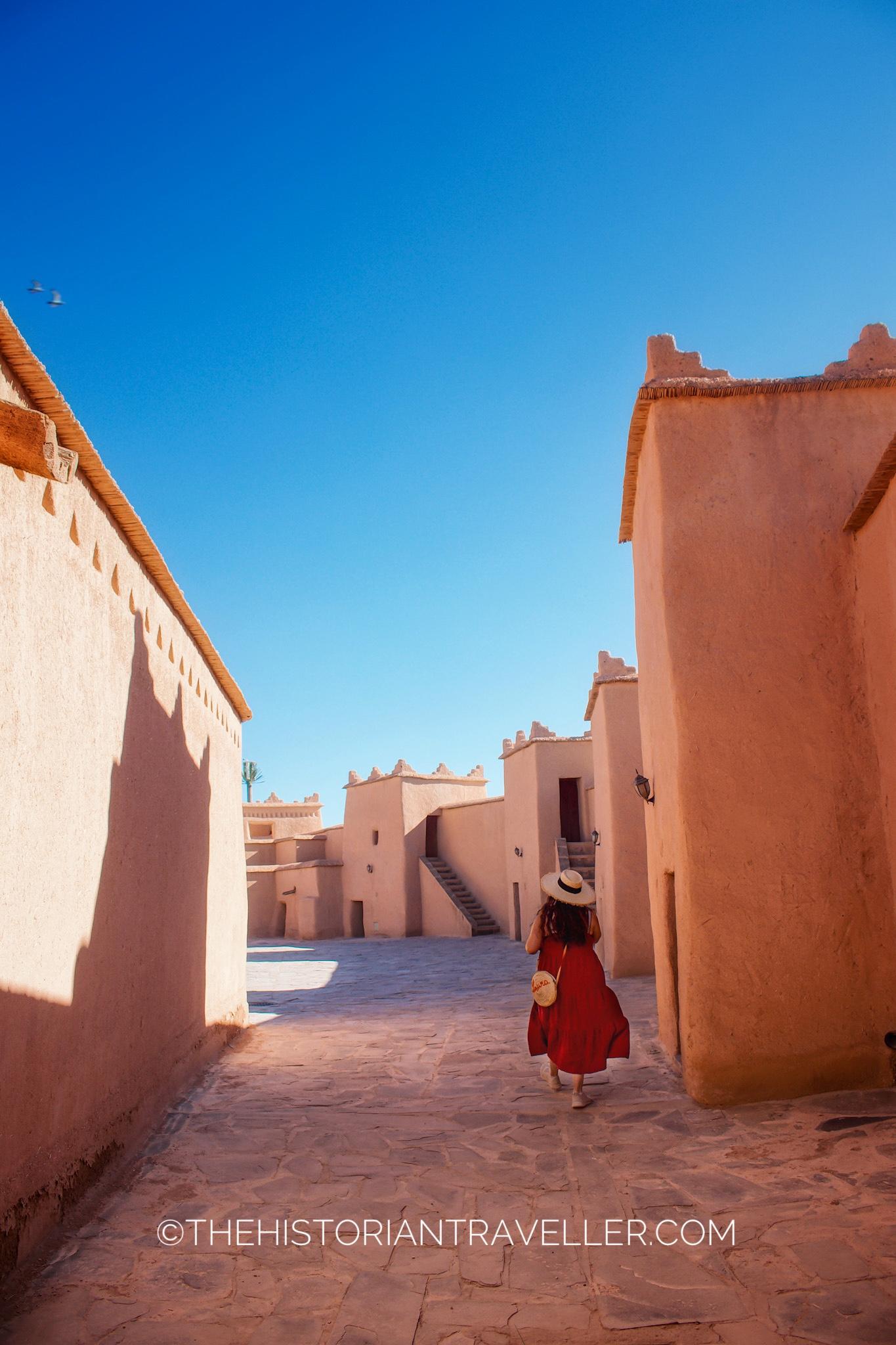
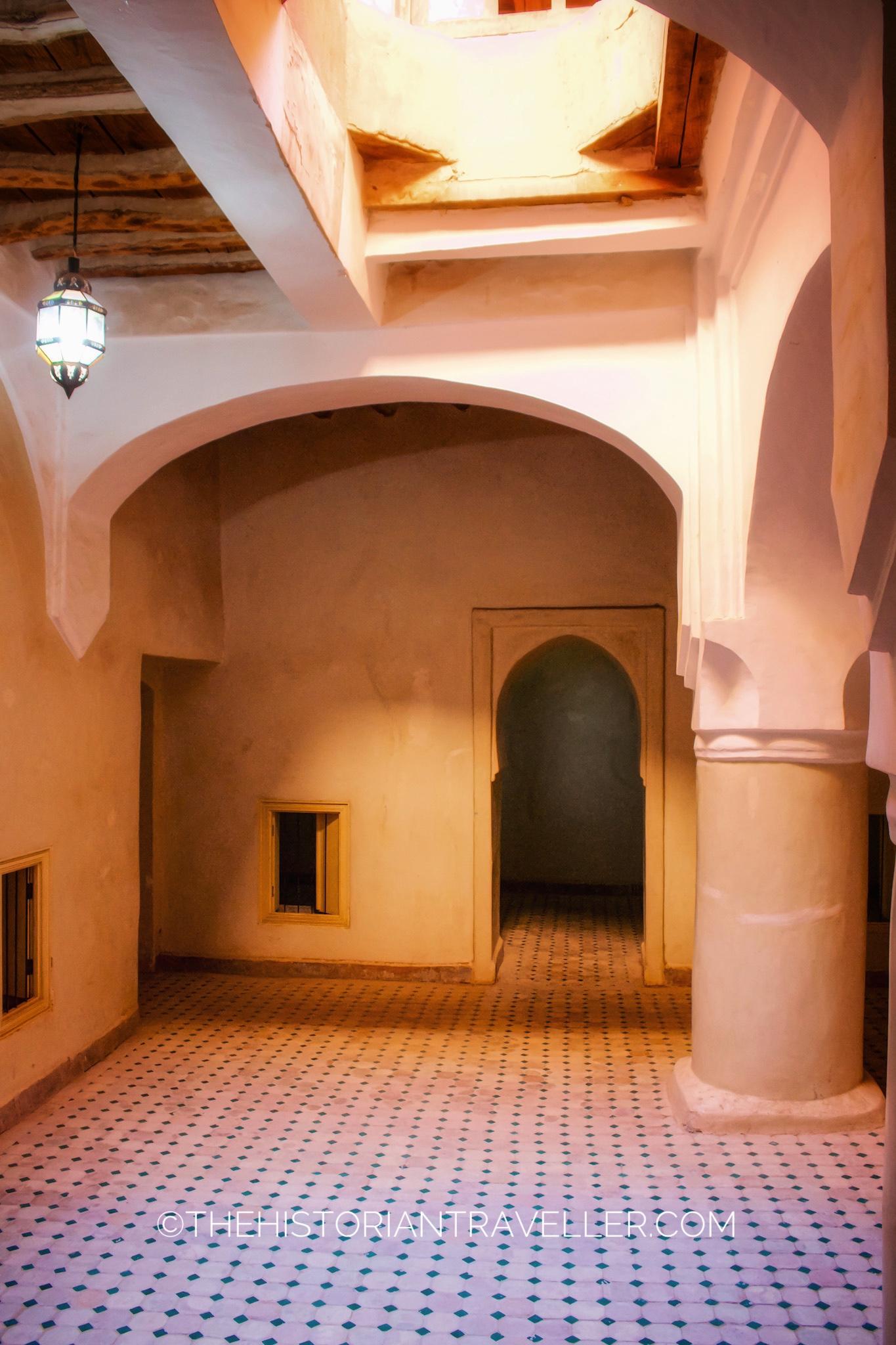
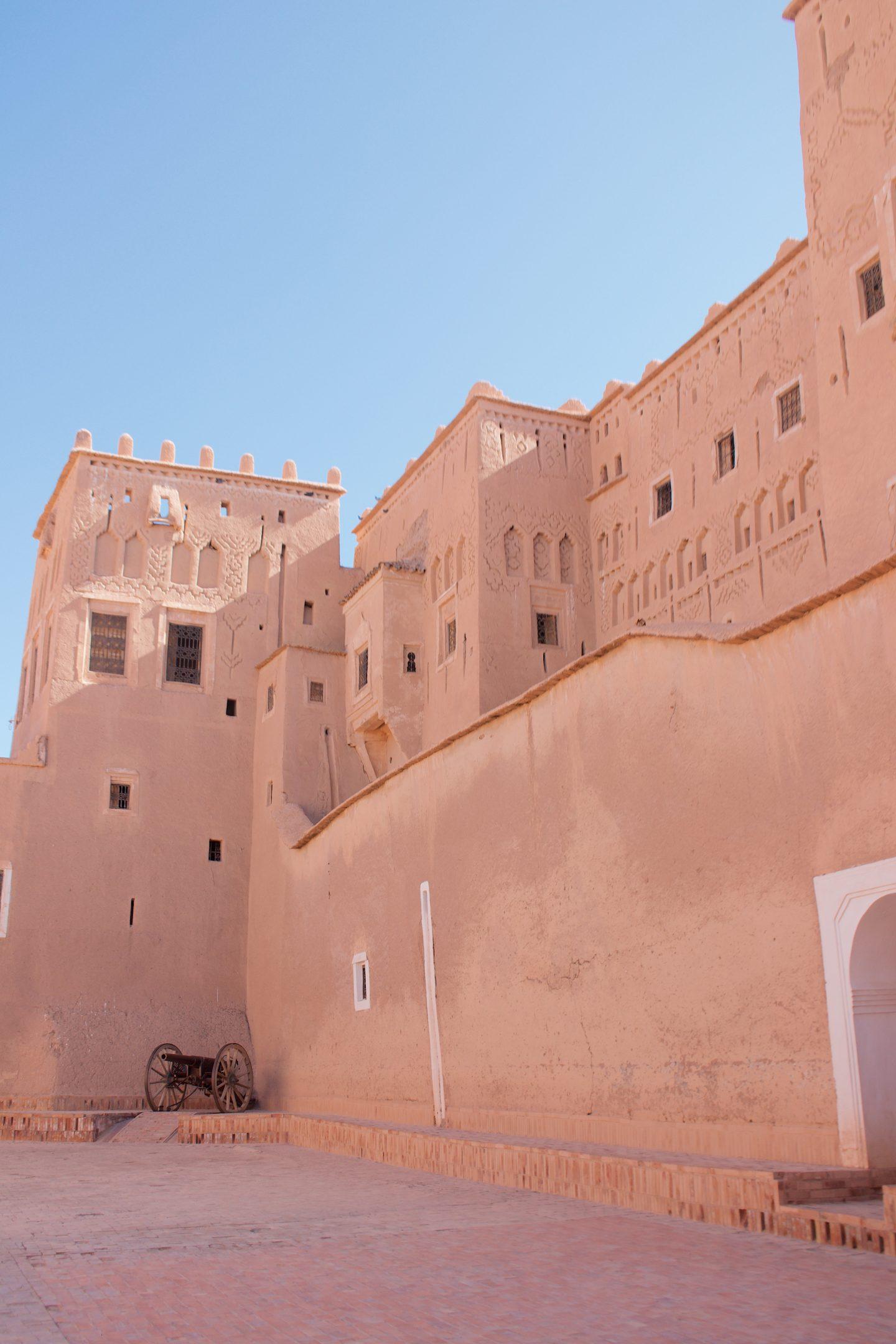
Situated centrally in the city of Ouarzazate, Kasbah Taourirt is one of the largest and best preserved Berber Kasbahs in Morocco. Built originally in the 17th century by the Imzwarn clan, it was afterwards enlarged by the Glaoui family in the 19th century. For centuries, the Kasbah occupied a crucial location in between the Draa and Dadès rivers. It’s function was that of strategically controlling the Saharan trade routes of the Draa Valley.
Today, in addition to serving as a location for many Hollywood productions, it is a UNESCO world heritage site. UNESCO also contributed to part of its renovation, reason for which the kasbah is now open to the public.
When we visited, however, an essential part of the Kasbah was closed. This was the central part of the fortification where the decorated and private rooms are. I wanted to see them badly! Unfortunately they are under renovation. Instead, you can go around the maze. I call it the maze because it literally what it is! In fact, one of the peculiarities of Kasbah Taourirt is its room connection system.
Indeed, 90% of the external structures surrounding the central fortification are connected by a quite complex series of tunnels, hidden rooms, staircases and dead ends. If you don’t want to get lost, a guide can be really useful. However, we found this an hilarious part of the experience. Indeed, we got lost several times trying to find a corner we didn’t explore. In our defence, some passages to the next room were really hard to find as hidden behind a wall or so low that you didn’t expect they were going somewhere!
Tips for visiting Kasbah Taourirt
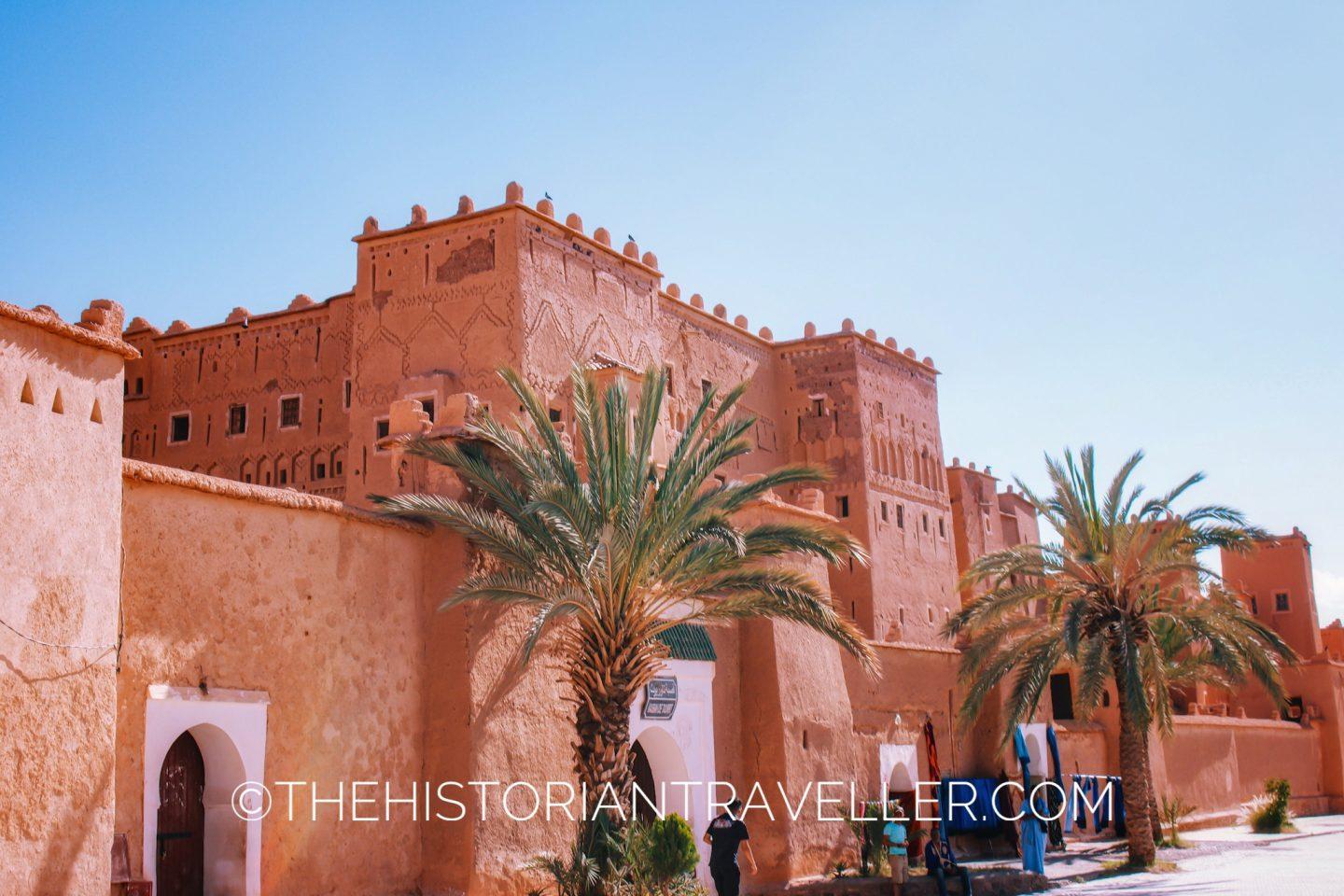
Be aware of scammers at this kasbah! Indeed, we almost fell for a scam without even realising it! When we bought our tickets from the ticket office, there was a guy wearing a (what I was thinking was) an official badge from the place. He marked our ticket and showed us the main entrance courtyard saying “you have to start your visit here, just wait your turn to enter”. He was so kind and smiling, so we were stupidly waiting in the main courtyard of the Kasbah.
A well organised plot!
He returned in a few moments later and started talking to us about the family who lived in the Kasbah, what was the use of that courtyard, where we came from etc. He was nice, but something didn’t sound right to me. I started looking better at the courtyard and I didn’t see any door or corridor going INSIDE the kasbah. So, I immediately realised he was taking time for something and started sending eye signals to my husband who was probably thinking the same thing. Indeed, after a few minutes, the guy started saying the Kasbah was a labyrinth and “two foreign alone” weren’t able to get around without his help. His kind help would cost us 400 MAD per person. A nice 75£ (to note the entrance to the Kasbah was in total 40 MAD -less than 5 euro).
We kindly refused but he became a little aggressive, telling us we were clearly “unable to understand what we were seeing”. To him we were just two stupid tourists. At this point, I became quite annoyed. I didn’t want to be rude and tell him that I probably knew the Kasbah better than him giving my academic background, but his insinuation about our intelligence costed him a possible tip I would have give him for his initial kindness and explanation. And, as he continued to curse us until we left for the actual entrance, I sent him kindly to f*** off.
Address and fee
The fee to enter the Taourirt Kasbah is 20 MAD to be paid in cash. The address is W492+RJF, Av. Mohammed V, Ouarzazate 45000
Kasbah Amridil
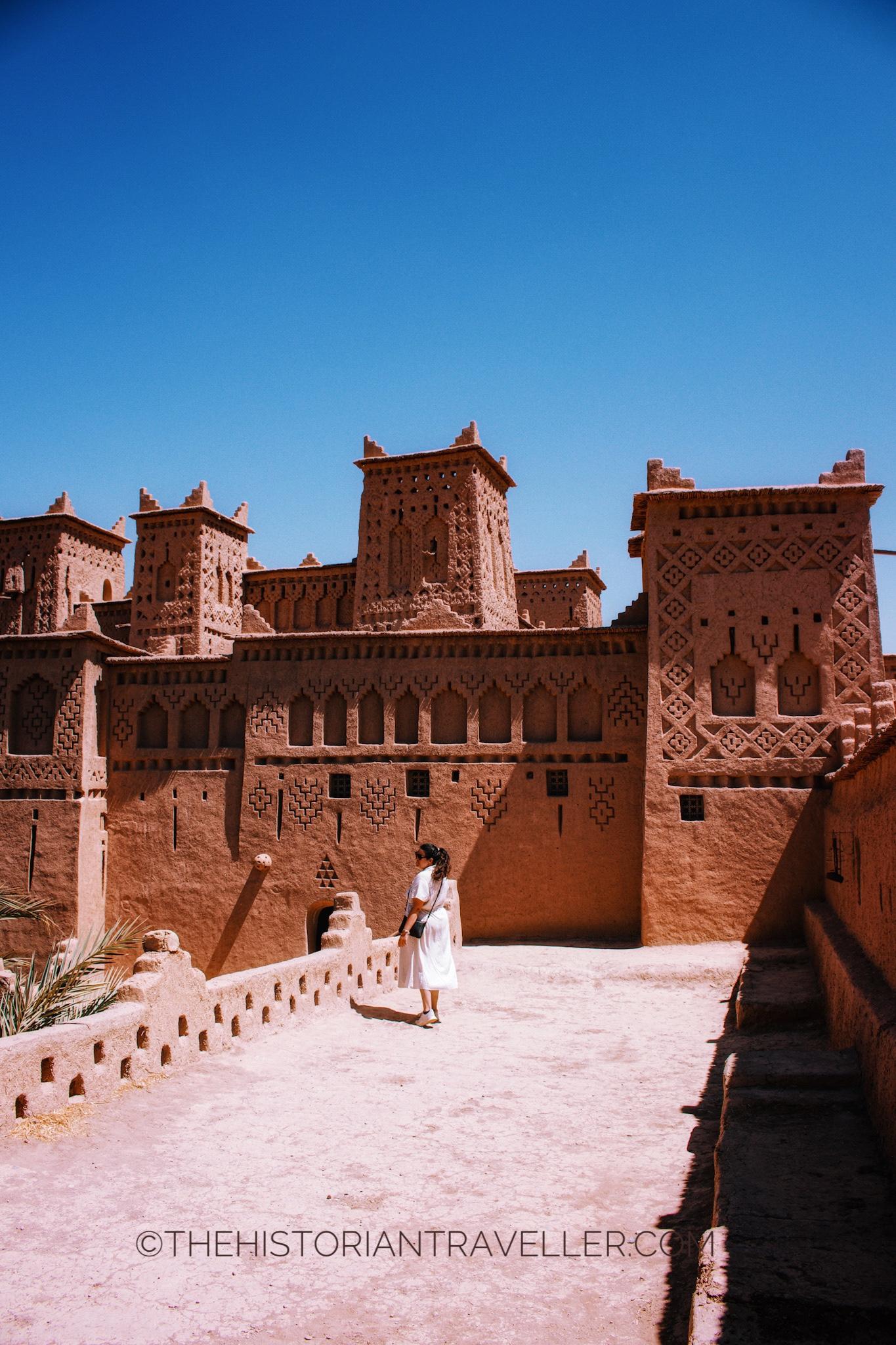
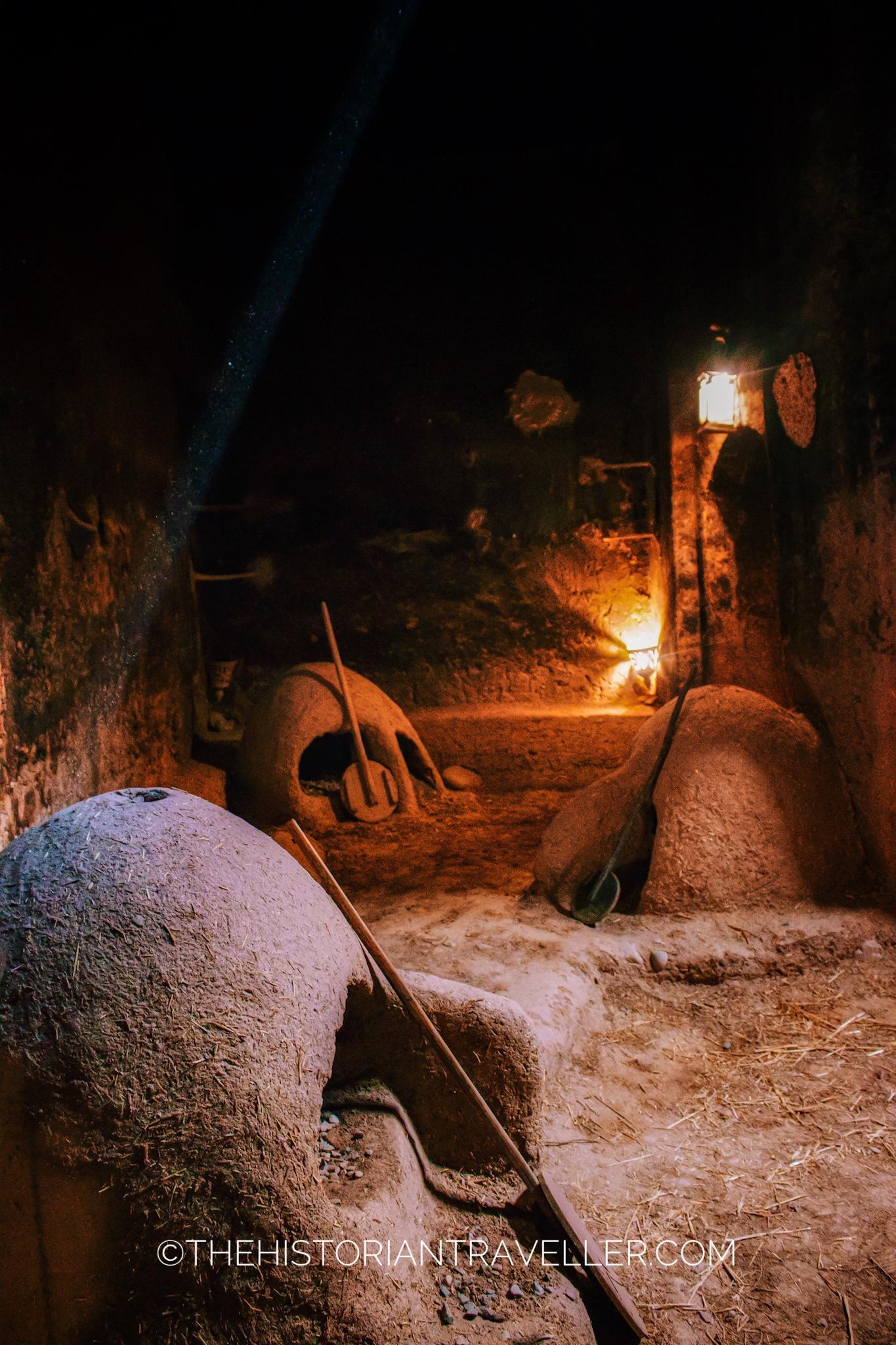
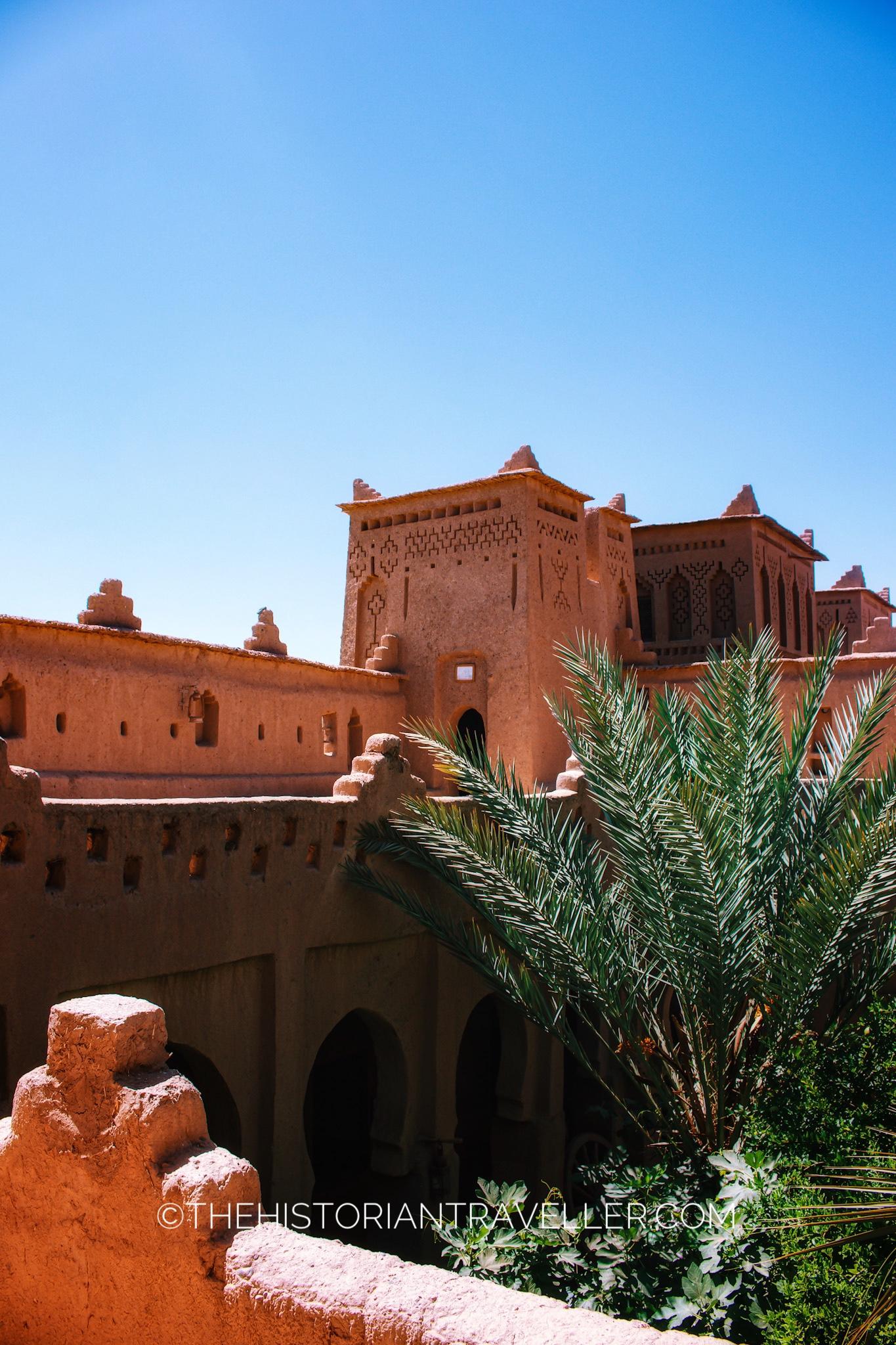
Set on the impressive background of the Valley of the Roses and the flourishing Oasis of Skoura, Kasbah Amridil is probably one of the best preserved Kasbahs I visited in Morocco. This is thanks to the impeccable care that the Nassiri family continue to give this property for more than 300 years. Indeed, this Kasbah belongs to the Nassiris’ since the 17th century.
It’s a real jewel of architecture with its perfectly ornate towers and rooms impeccably preserved. There are even ovens on the ground floor that still function as they did in 1500! Differently from other Kasbahs I visited during this trip, the living spaces at Kasbah Amridil are well-defined. Indeed, the first floor was used for the animal, the second floor was used by the staff of the house and food storage, the third floor and attic to the Caid of the Kasbah and potential guests.
The entire living space is built around a classical wust ad-dar (a sort of patio). This has been recently renovated and filled with different plants. This has been regarded as a little controversial choice. Indeed, it looks like it reflects as style not traditional for the area but resembling the riads of Marrakech.
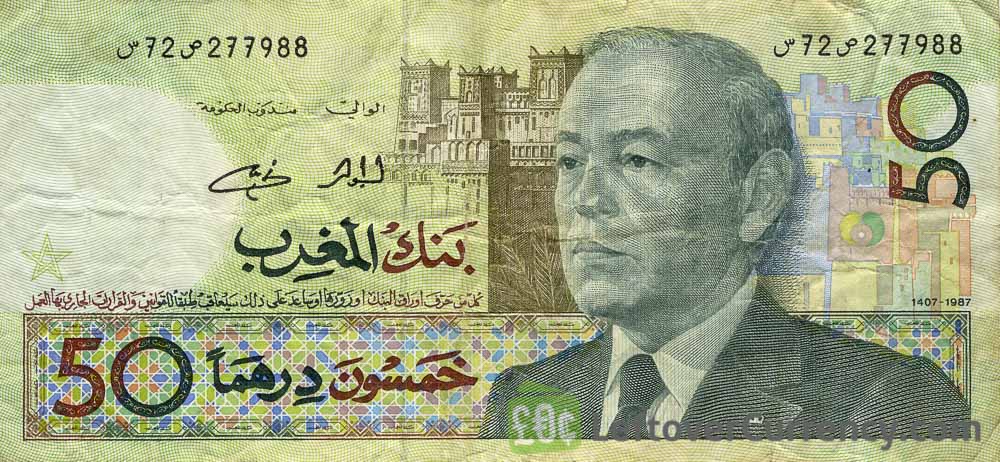
Kasbah Amridil has been part of several filming productions including Laurence of Arabia and Ali Baba and the Forty Thieves. Rumours say it was the favourite Kasbah of King Hassan II and for this reason it was featured on the old 50 Dirham banknotes. You can see one those old banknotes framed in one of the towers in the upper floor.
Address and fee
The fee to enter the Kasbah is 20 MAD. The addres is: Kasbah Amridil, Ouled Yaacoub, Skoura 45500
Additional Kasbahs to visit in Morocco’s High Atlas Mountains
There is a large number of impressive Kasbahs to visit in the High Atlas Mountains, particularly in the beautiful scenery of the Draa Valley. Therefore, if you have some time to spare, here is a small number you can add to your itinerary. For an extended list, please see the map above. I picked up the Kasbahs listed below according to their features (i.e. if they have beautiful rooms inside, or peculiar architecture).
Kasbah des Caids
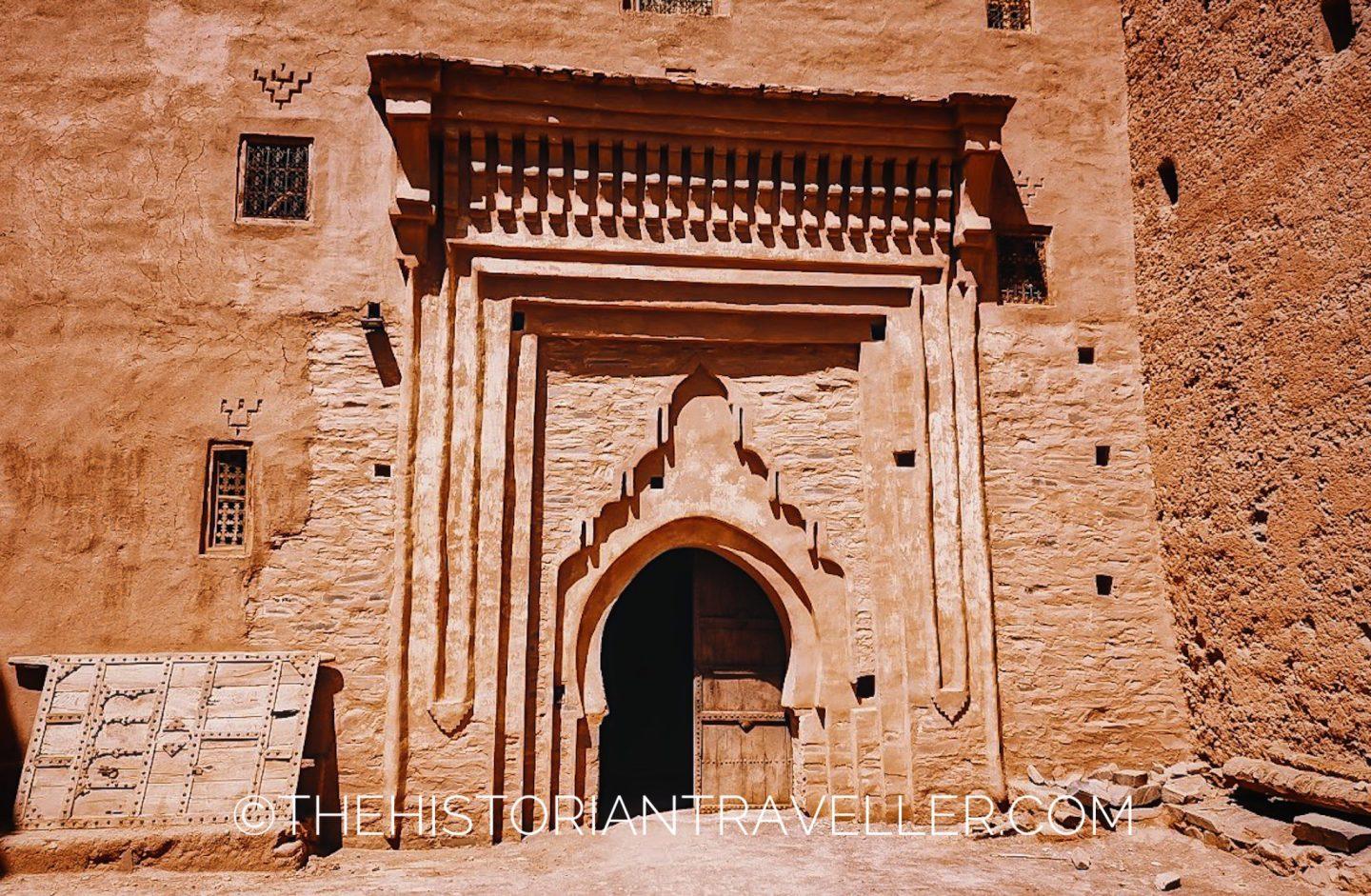
The Kasbah des Caids is one of the oldest (if not the oldest) Berber fortifications in Morocco. Indeed, it dates back to the 16th century and its one of the lasts of its kind giving its features. Situated in the crucial way in between Marrakech and Timbucktu, the Kasba of the Caids stands in the outskirts of Agdz in the fortified village of Tamnougalt. This can be explored alone of as a mini itinerary of three close Kasbahs: the Tamnougalt Kasba and a little nearby fortress now famous as the Street Art Kasbah for its paintings in the mud-brick walls.
Similarly to the Taourirt Kasbah, also Kasbah des Caids’ architecture is formed as a maze of rooms. It was built by the Mezguita clan as administrative and residential dwelling for the caid of the region. The Caid was a sort of local judge. Because of this double function the kasbah features both private and public architectural elements such as a hammam and the office of the Caid. The Kasbah is still attached to its 500 years old ksar that you have to navigate in order to find the entrance.
Part of the Kasbah is currently a guest house managed by its owner Hassan. I hope to visit during my next trip to Morocco!
Kasbah Ait Hammou ou SaidKa
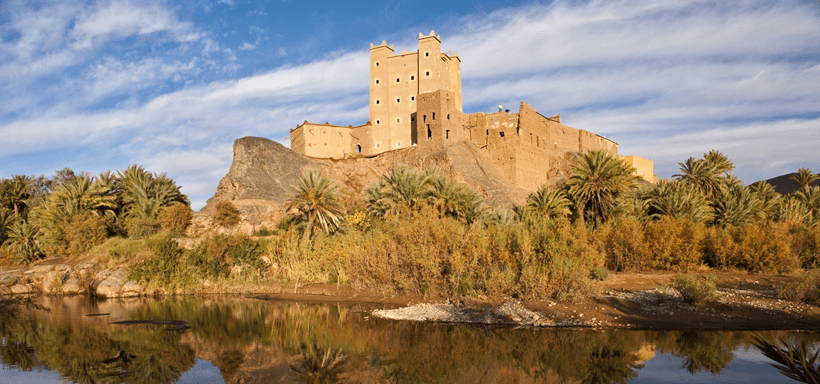
Closer to Zagora, Kasbah Ait Hammou is set on the top of a very scenic location. Surrounded by water and a dense palm grove. It dates back to the 17th century and it’s been recently renovated thanks to the funds of the BMCE banks. This Kasbah is still under the radar for tourists visiting Morocco, so this is your chance to stand the crowd before it becomes too popular!
Kasbah du Glaoui de Tamdakhte
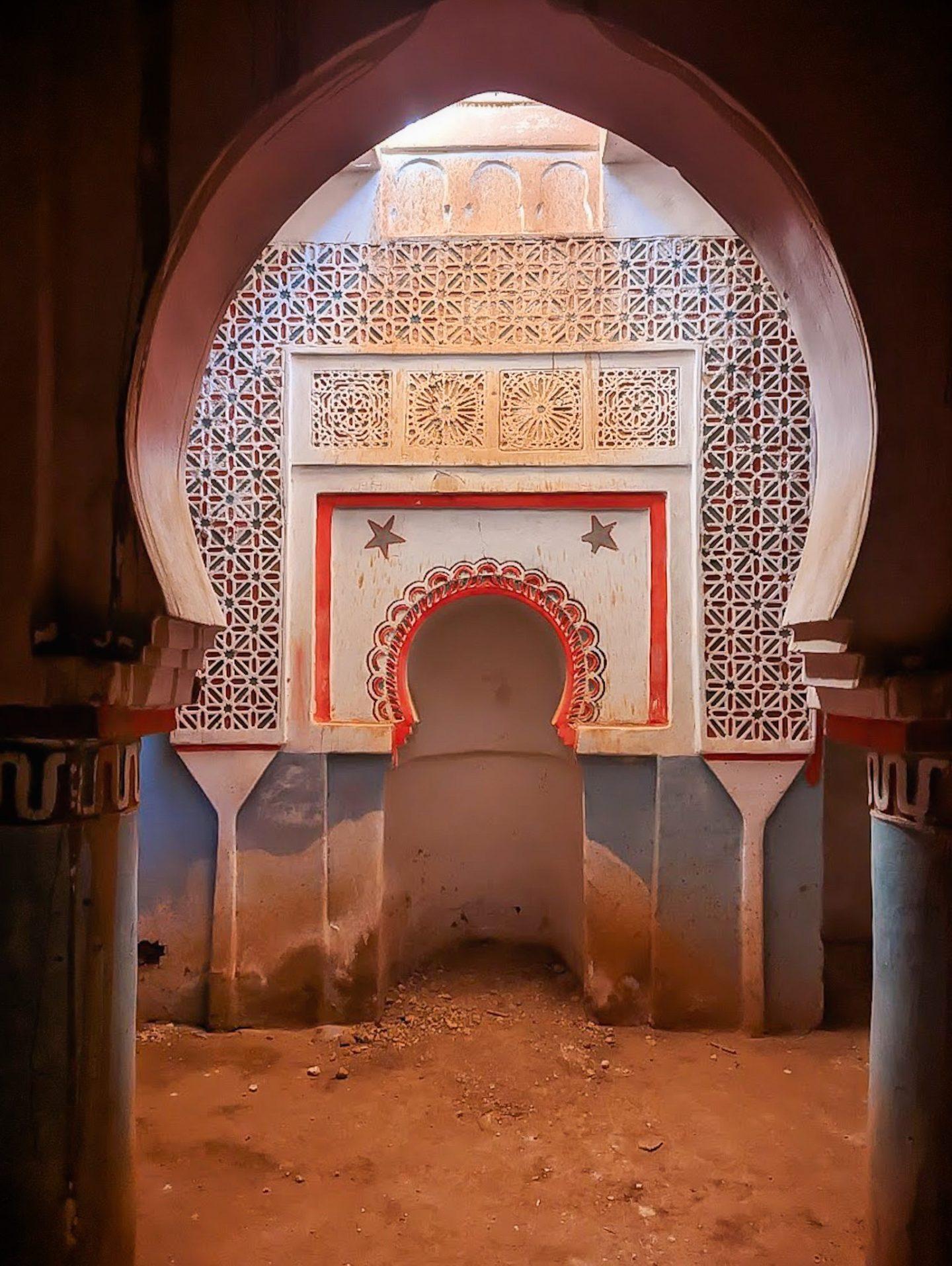
Just at a five minute drive from Aït Benhaddou the Kasbah du Glaoui de Tamdakhte, or simply Kasbah de Tamdakhte, is a still a unknown architectural jewel. Indeed, shadowed by the fame of the two nearby famous Kasbah Telouet and Aït Benhaddou, this fortification is largely ignored by tourists.
Dating originally to the 17th century, Kasbah de Tamdakhte used to belong to a Berber chief, Ali Ou Brahim n’Aït Haddou. The story tells that he fiercely opposed to Thami el Glaoui but unfortunately he was defeated and executed around 1900. After his death, the Kasbah passed into the hands of the Glaoui clan that enlarged it and built additional annexes. After the Moroccan independence, the Kasbah was transformed into a prison and hosted the famous Oufkir family who took part to the coup of 1972.
Now most of the Kasbah is a ruin but you can still admire a glimpse of the beautiful architecture of the salons and carefully carved rooms. I hope the government will intervene to save this beautiful place from a complete decline!
The fee to pay is 15 MAD.
Kasbah Oulad Othmane
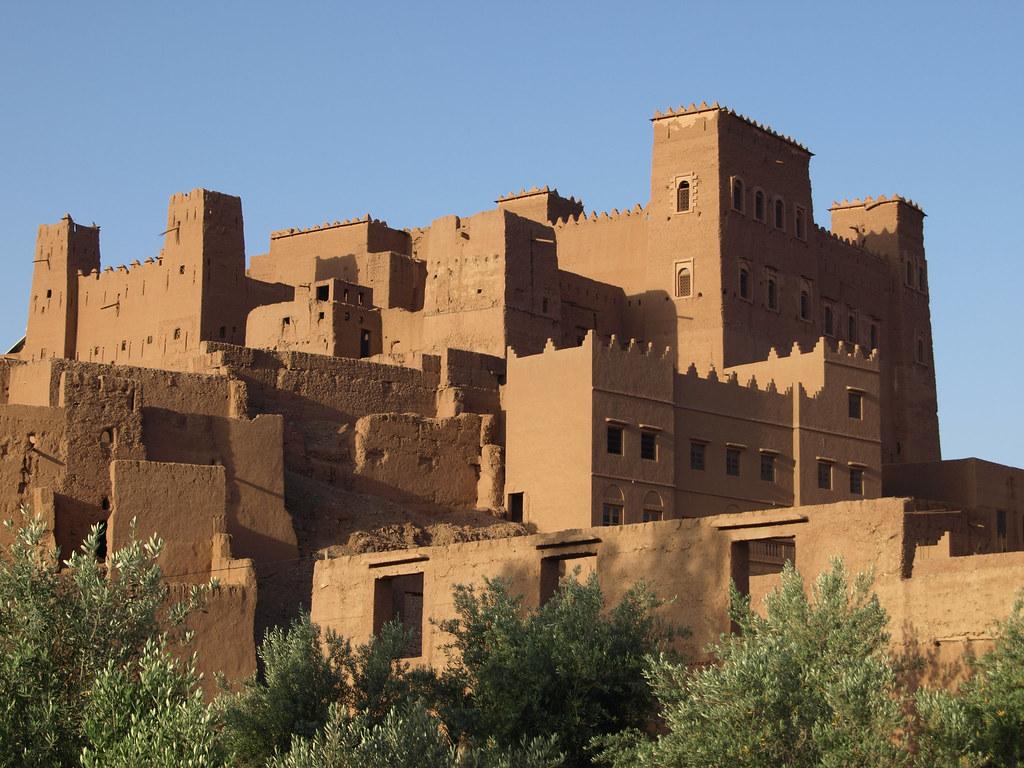
Kasbah Oulad Othmane is a fine example of 18th-century fortification. The Kasbah is still maintained by its historical family who recently renewed and turned into a guest house. However, people can still visit even if not guests, possibly stopping by for a cup of mint tea.
The underground Kasbah of Tamegroute
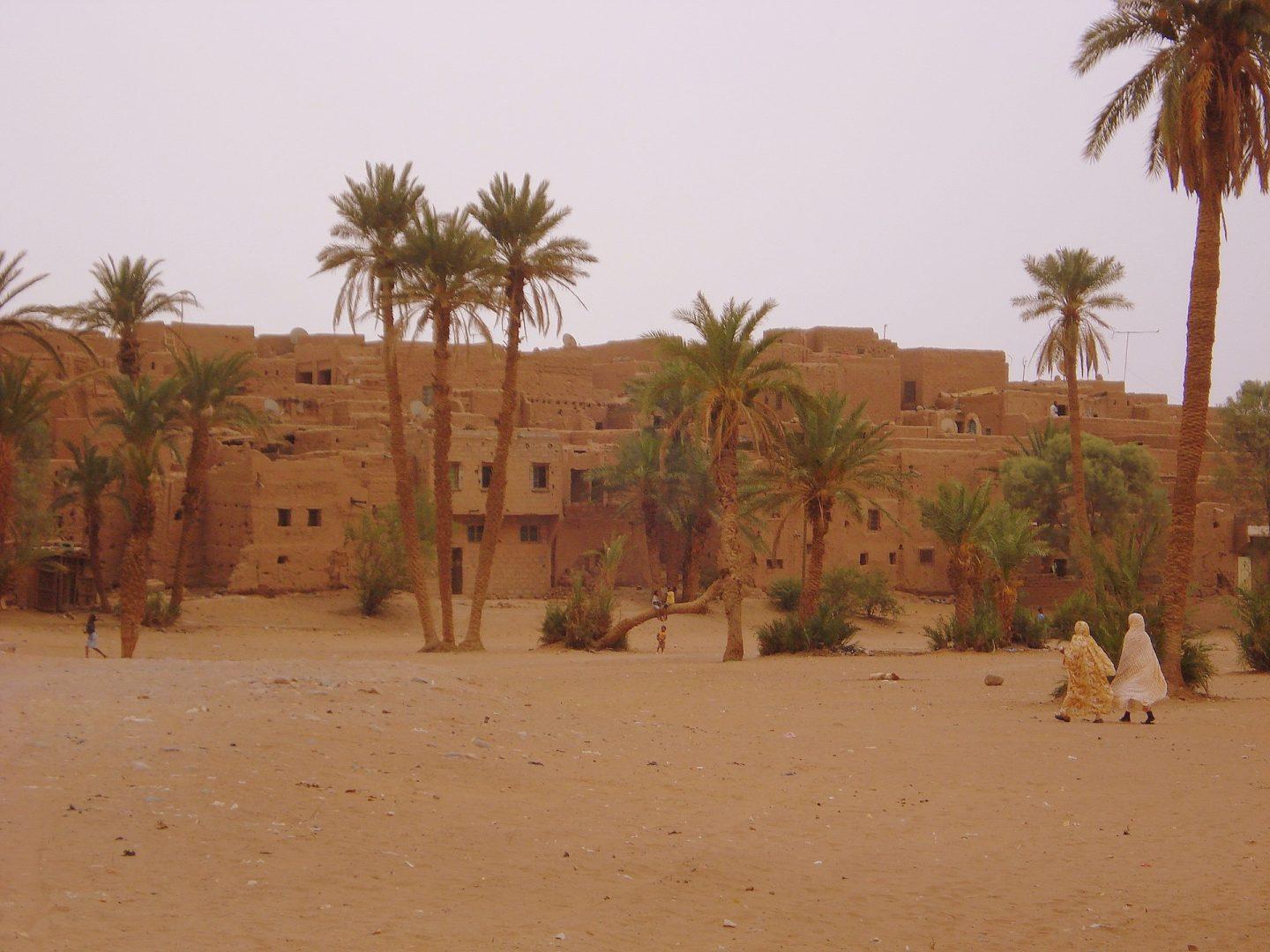
Tamegroute is a small village not far from Zagora. People often ignore it because it’s quite unassuming compared to other touristy places in Morocco. However, Tamegroute has many incredible sights. One of these is its Kasbah. Indeed, this fortification is very peculiar, probably a unique example of his type in Morocco, because it’s completely underground. Indeed, both the kasbah and its ksar are buried under the sand forming a series of windowless fortified corridors and dark dwellings. The light filters only from occasional openings in the ceiling.
Apparently, people live there for centuries as they found this type of architecture providing shade and cooler temperatures throughout the day. A guide is more than essential to get around as the fortification entrance is invisible from the outside.
While in Tamegroute, don’t miss the occasion to visit the Koranic Library. This is located in the Nasiriyya Zawiya, the city’s religious institution. The library used to be the largest Koranic library in North Africa and it still hold more than 4,500 rare volumes and manuscripts.
Lastly, the city is also famous for its pottery and it’s one of the best places if you would like to do some shopping!
As the ksar is completely underground, it doesn’t have a pinpoint on the map above. However, I pinpointed the city of Tamegrout. Once there, you’ll need someone leading you underground.
N’Kob the village of 45 Kasbahs
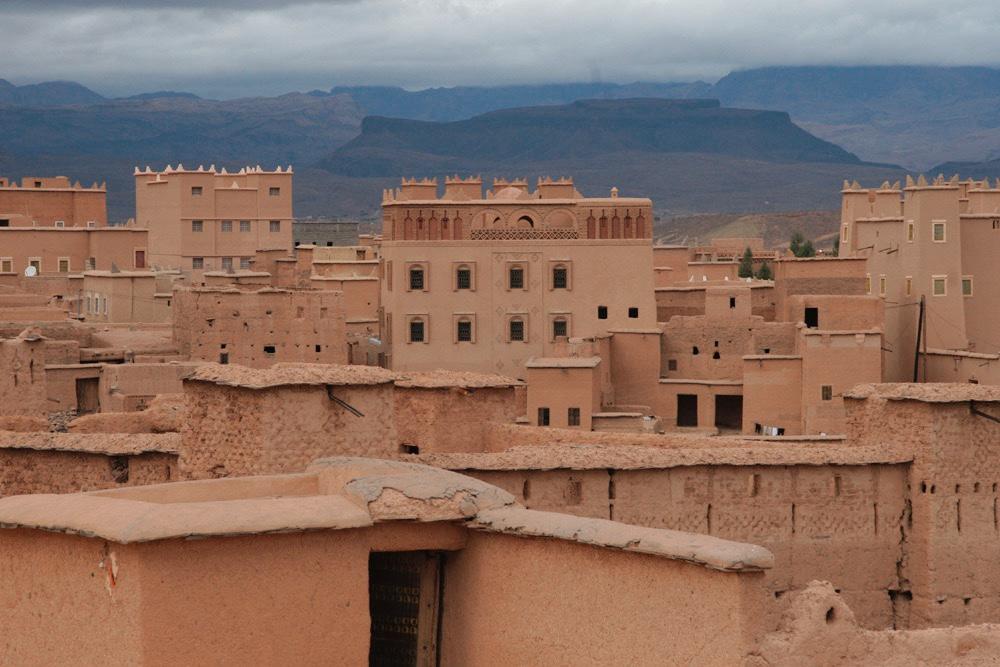
If you haven’t had enough of visiting Kasbahs around Morocco, this little village is what you need to fulfil all your kasbah visit needs! Indeed, N’kob has more than 45 Kasbahs, and most of them are in excellent preservation status. Indeed, the residents of the village decided to turn their historical heritage into a full tourist attraction and renewed great part of the Kasbahs of the village. These are now hotels, museums and restaurants. One can spend even a week trying to visit them all.
The village sets at a height of 1050 meters surrounded by two large oases. One of the most famous Kasbahs in the village is Kasbah Ait Hatta that belonged to the Berbers of the famous tribe carrying the same name.
Rock the Kasbah. Overnight stay in a Moroccan fortification. How to choose where to stay.
Booking an overnight stay in a Moroccan Kasbah should be on everyone’s bucket list of unique experiences to to in Morocco. Indeed, this would provide a unique way to experience the culture and hospitality provided by the Berbers. The High Atlas Mountains, particularly the Draa Valley, is the best region to stay in a Kasbah. Most of these structures are authentic Berber jewels, some of them even dating to the 16th century. However, pay attention to the ‘fake-looking’ kasbahs. Indeed, driving through the High Atlas Mountains taught us that not all you see it’s authentic. There are many hotels that call themselves as ‘Kasbah X’ and then they are just regular hotels but in the middle of nowhere.
How to find an authentic Kasbah where to stay
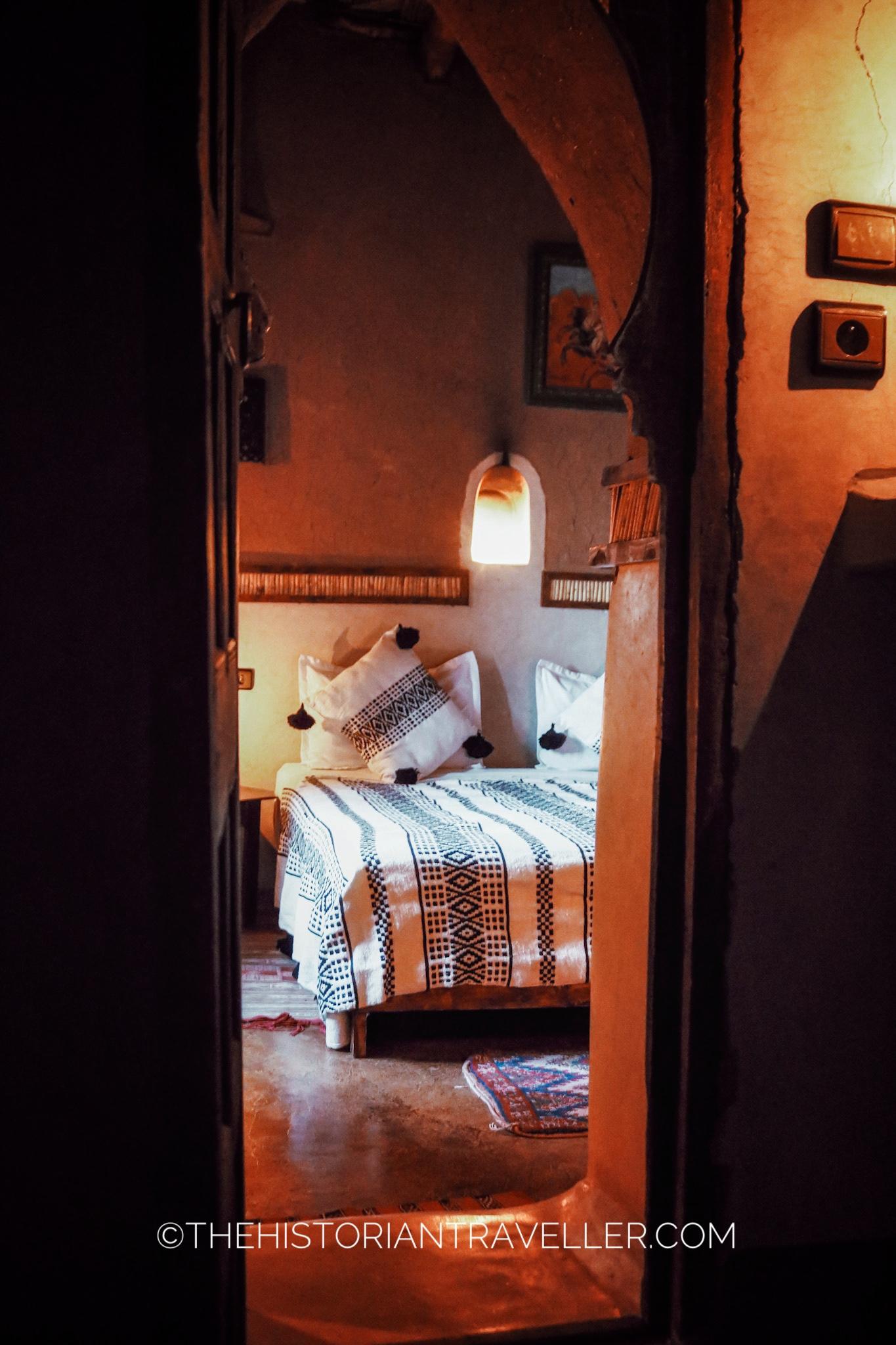
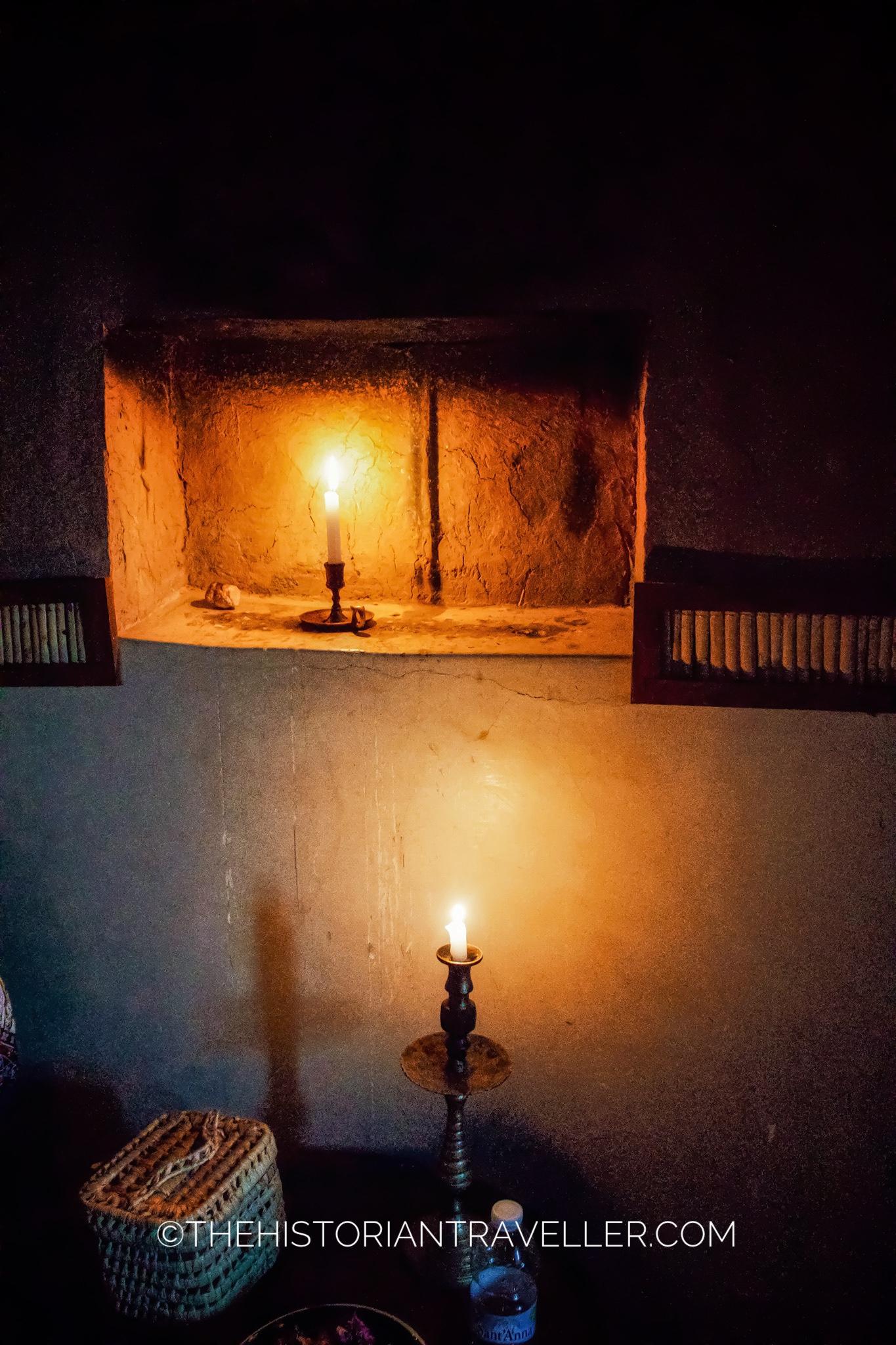
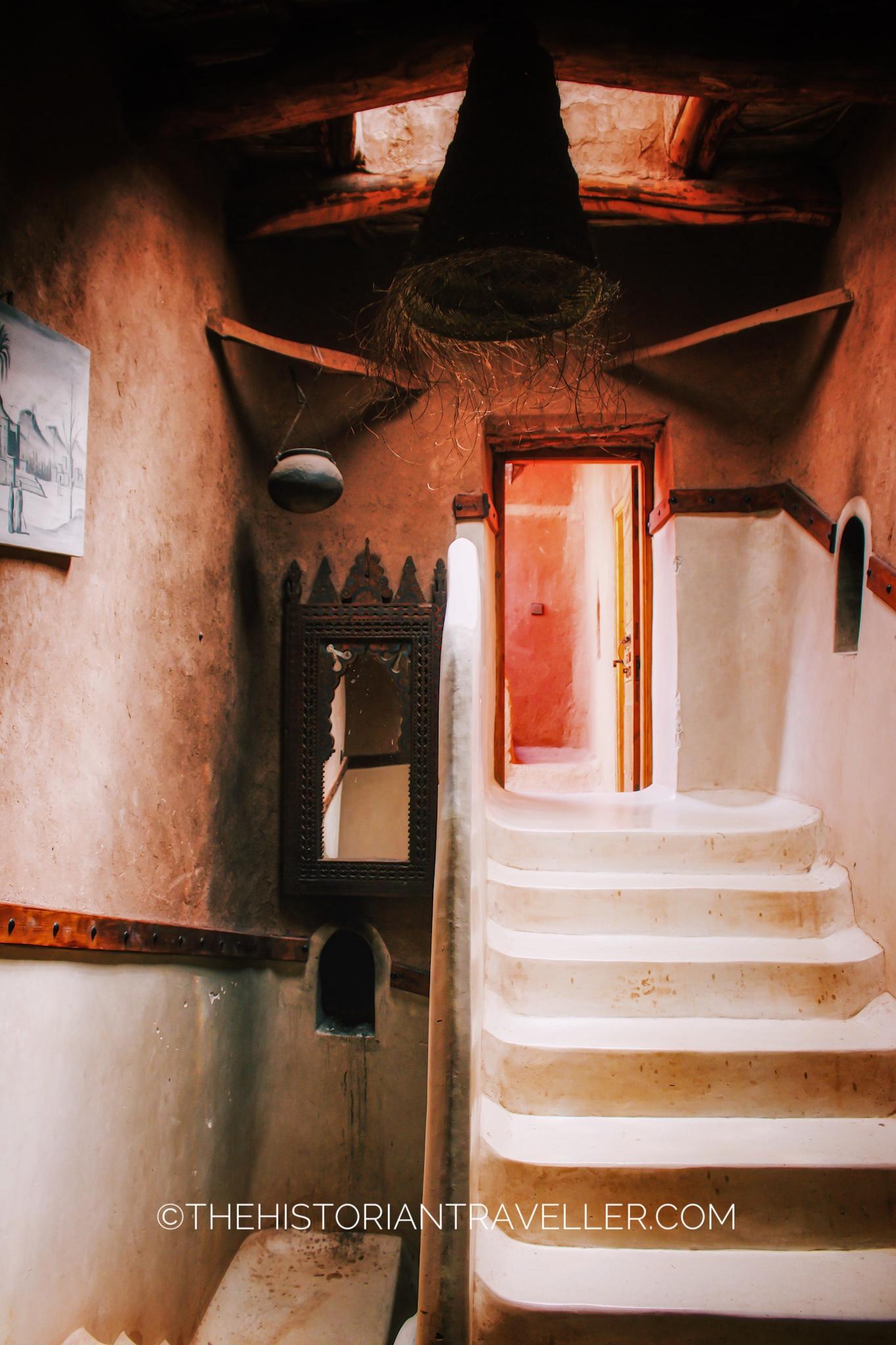
Real, authentic kasbah are quite a rare sight. However, the High Atlas Mountains have the highest concentration of them. To be 100% sure you are staying in an authentic kasbah, you should keep in mind 3 simple rules:
- Authentic kasbah are made of mud and earth materials. This is clearly visible as you touch the walls. Mud brick is often mixed with sand and straw that pops out of the walls here and there. Moreover, as this needs constant care, you’ll probably see a section of the kasbah where the actual mud-bricks are prepared in case of need. Most of them need to dry in the sun for a couple of days/weeks.
- Most authentic Kasbahs date between 17th and 19th century. Some of them are even regarded as UNESCO world heritage sites. This means that to preserve their integrity and historical value, redecoration and restorations have to be kept at minimum and respecting the original architecture. Therefore, an authentic 17th-century Kasbah won’t turn into a luxury hotel very soon.
- Authentic Kasbahs in Morocco still follow their centuries-old inheritance rules. Indeed, you have to think them as the equivalent of European Castles. Therefore, their original owners were likely belonged to families of a certain importance within their village/society. As per our Castles, these properties were passed from father to son until the current generation. Although the fundamental hierarchies the past are (most of the time) no longer alive, these families still have the control of their Kasbahs. Ergo, if your Kasbah owner is a British man, it’s unlikely that his Kasbah is really authentic. There might be a few exceptions, of course, but always double check the Kasbah historical info before going.
Historical Kasbahs including a guesthouse
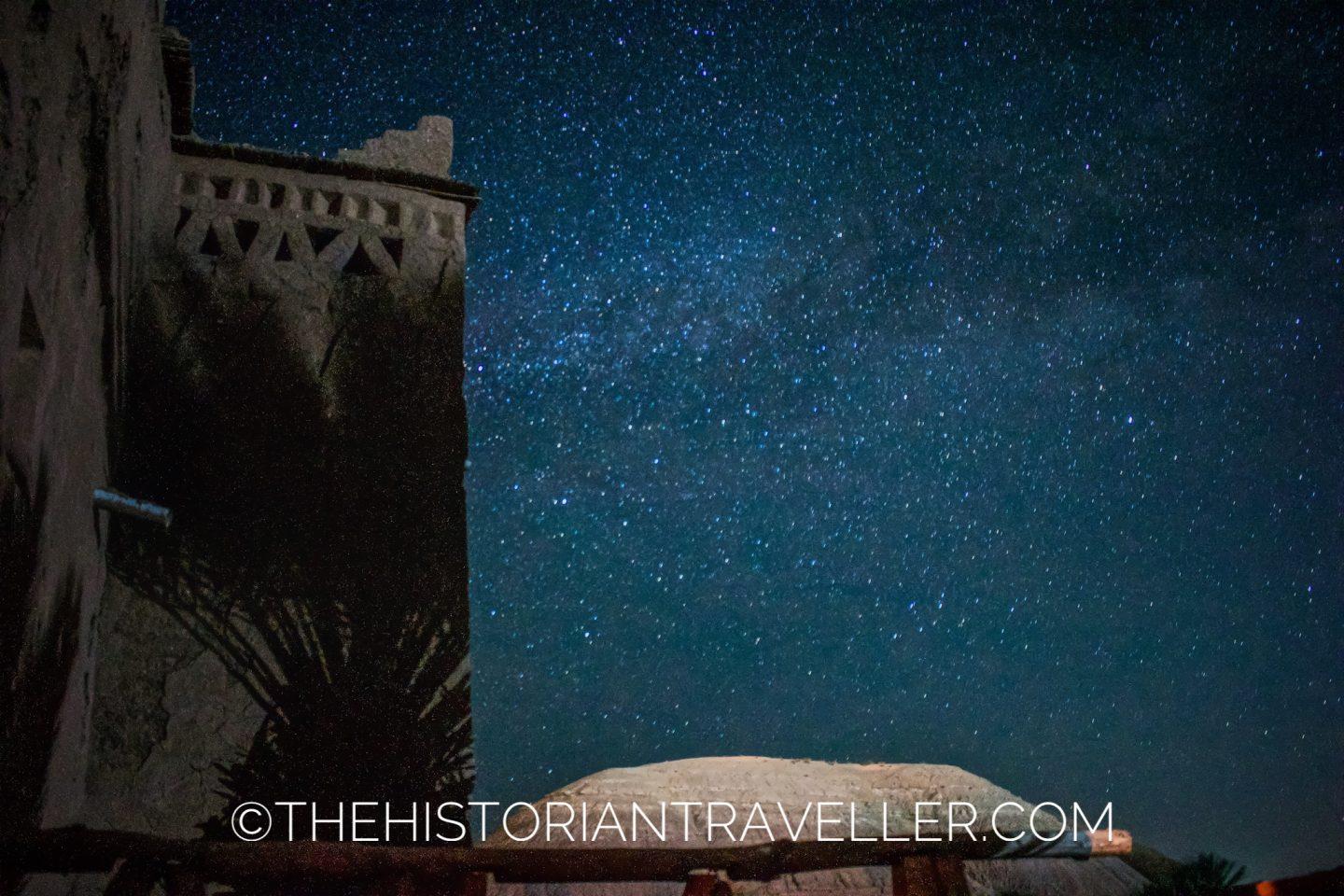
For our overnight Kasbah stay, we chose Kasbah Tebi in the Ksar of Ait Benhaddou. This Kasbah is a UNESCO world heritage site and its owner, Mohamed (and his family), keep it in pristine authentic conditions. The Kasbah doesn’t have electricity, this means the only source of light for the night are candles (provided with great abundance by the family). You have always the option of sitting outside and enjoy the most incredible starry night of your life.
If you want additional options for your Kasbah stay, here is a small list of Kasbahs hosting a guesthouse:
- Kasbah des Caids
- Kasbah Oulad Othmane
- Espace Kasbah Amridil
- Kasbah Itran
- Kasbah Assfar
- Kasbah Baha Baha
Conclusion
Exploring the Draa Valley and all its beautiful fortifications it’s one of the best decision we took for our Morocco itinerary. We learned a lot about the Berber culture and we discovered unspoiled beauty even across the most remote areas of the High Atlas Mountains. I hope this blog will inspire you to discover more of this fantastic area of Morocco and plan your own Road of a thousand Kasbahs itinerary.
Plan your trip to Morocco
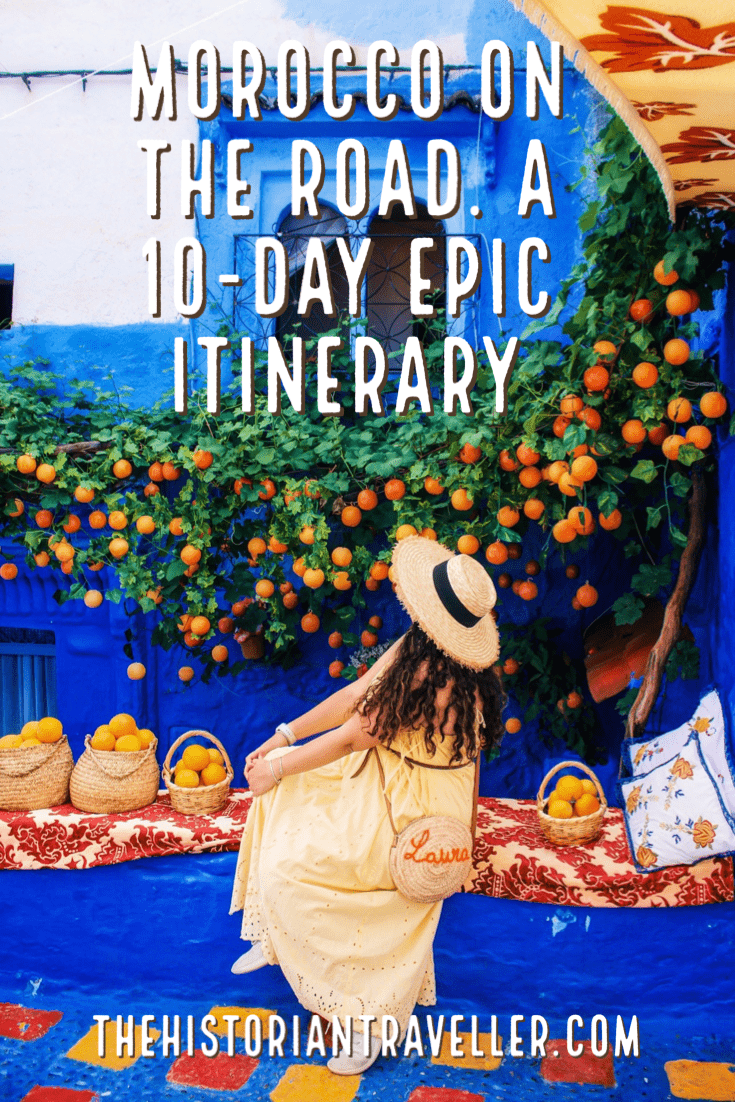
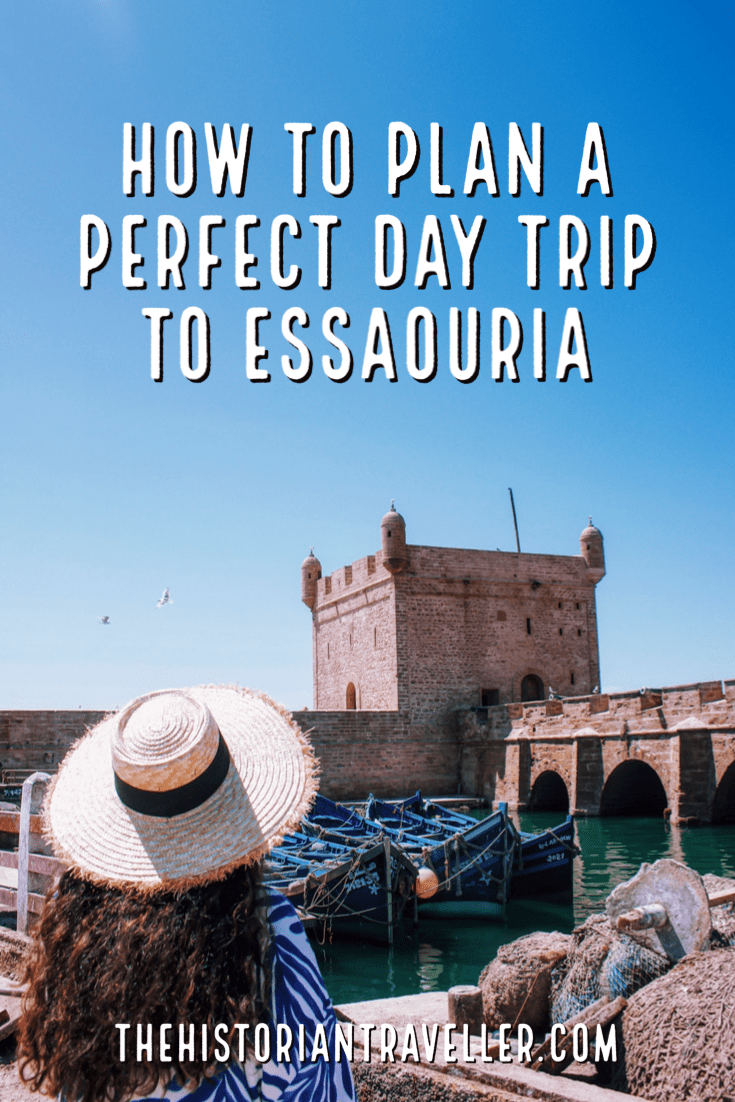
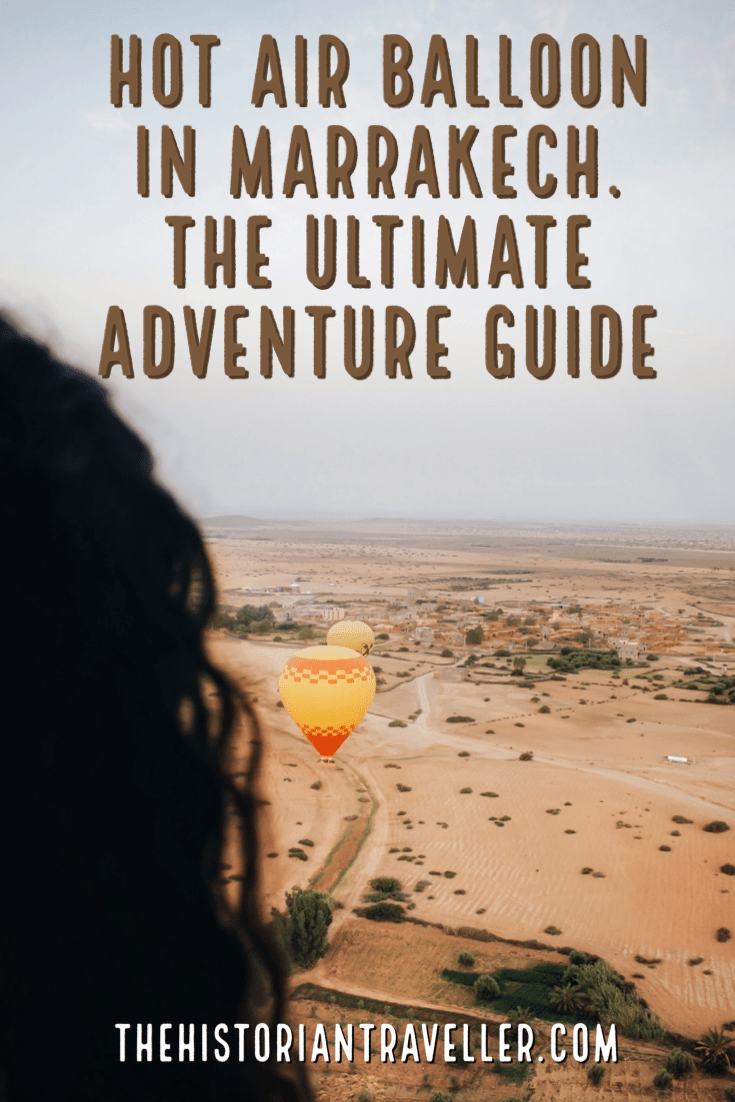
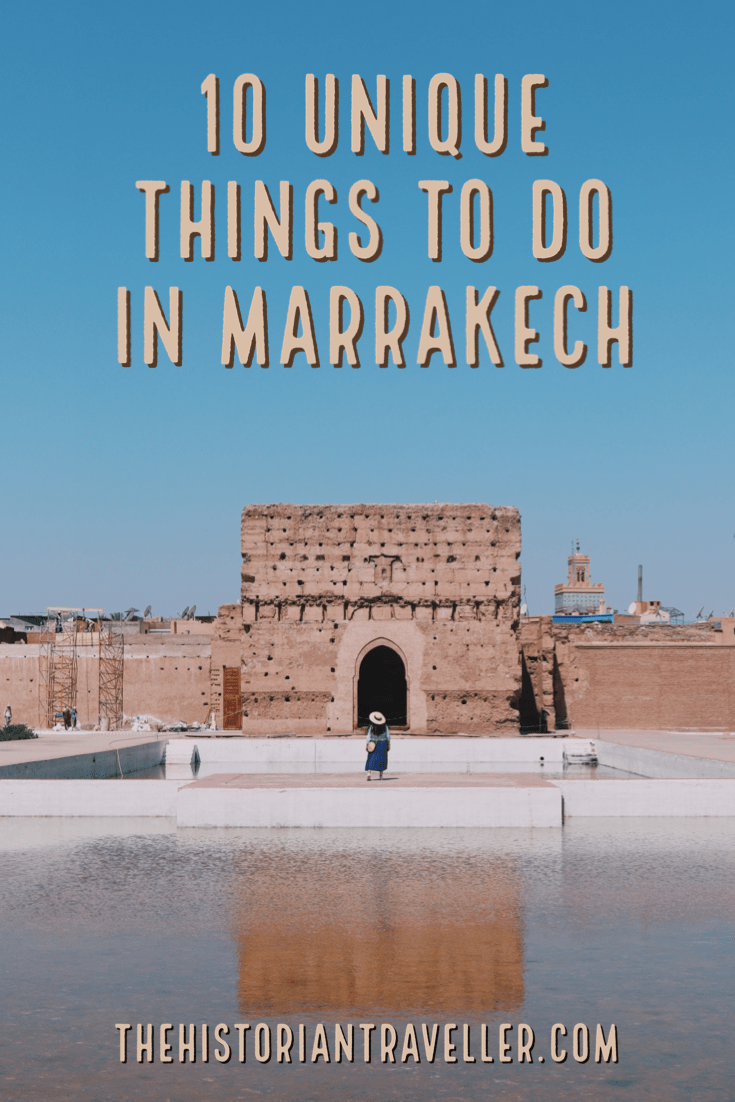
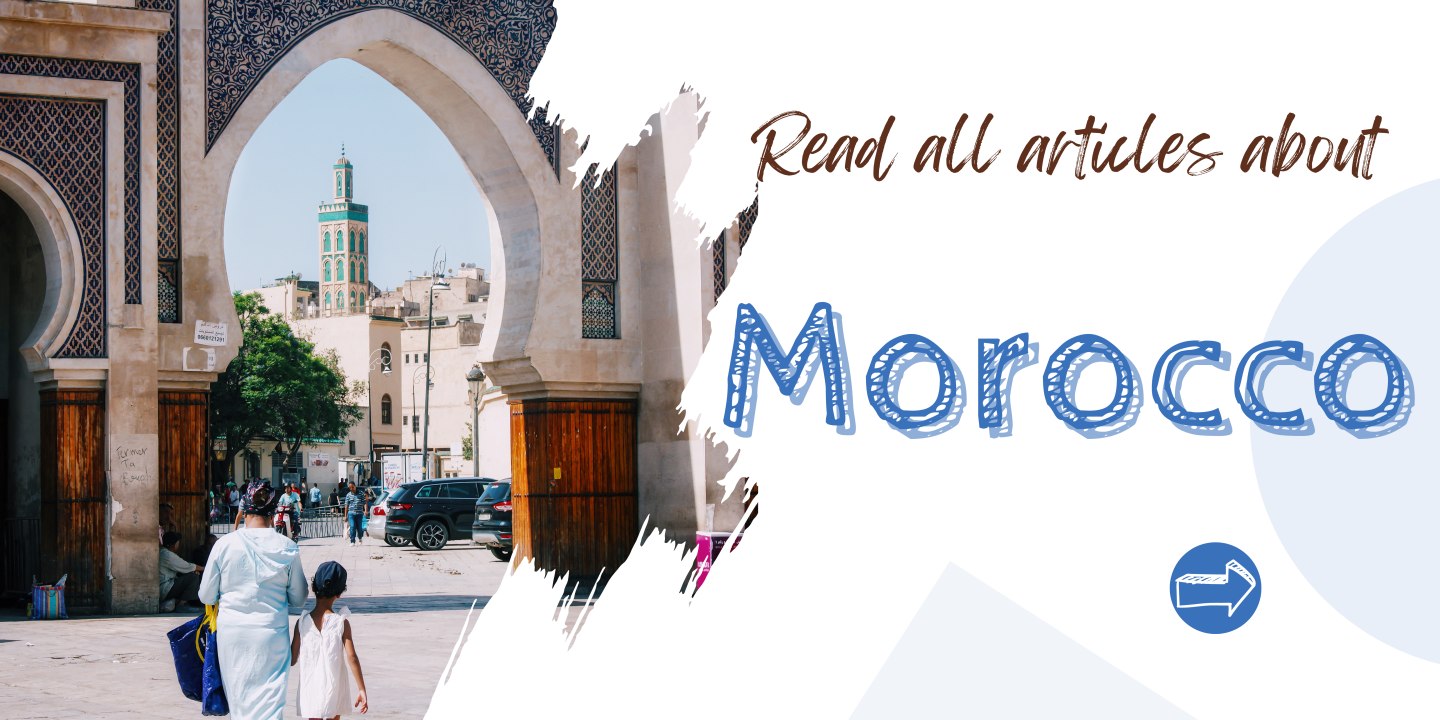
Do you need help for planning your trip? Find here the best tools:
Booking.comNo time to read? Pin it for later!
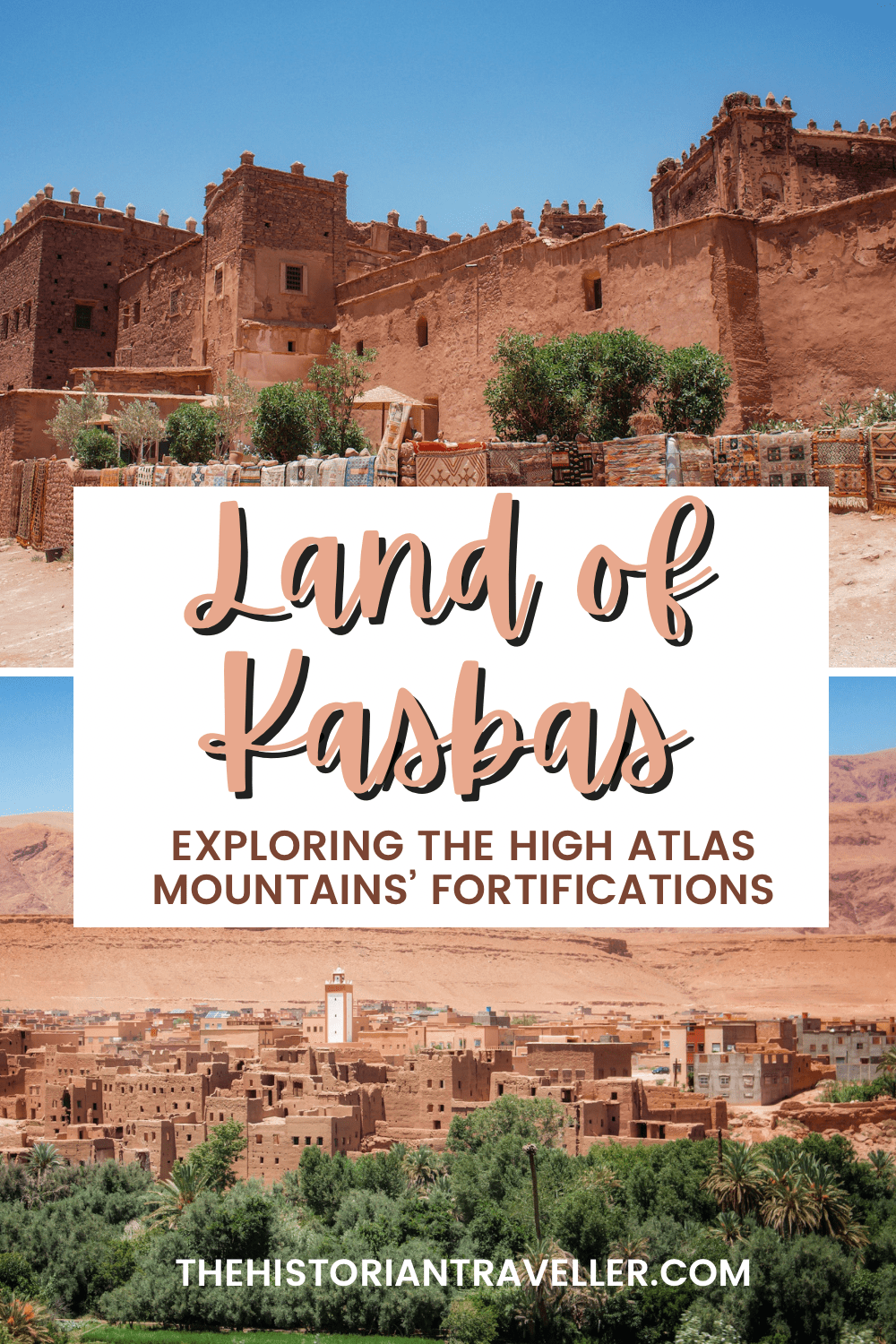

I did a road trip through the Atlas Mountains to Merzouga and then up north to Cascade D’ouzoud. It was one of my most memorable adventures and kept me in Morcocco for extra weeks (well worth it).
Author
The Cascade d’Ouzoud is on my next bucket list for Morocco! Couldn’t make it this time! This area is so full of beautiful sights!
I’ve always wanted to visit Morocco! I didn’t realise how many stunning cultural places there are to visit. If I ever visit I’ll be sure to refer back to this post. Thanks for sharing!
Author
I hope you can visit! This area of Morocco is really stunning!